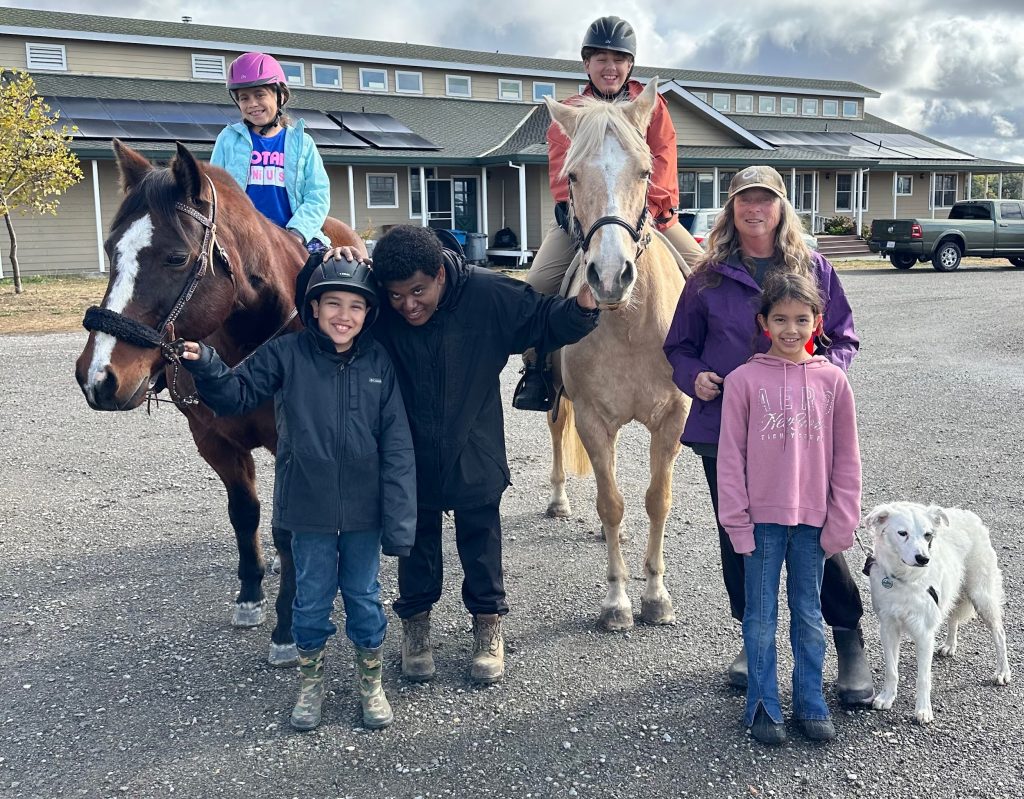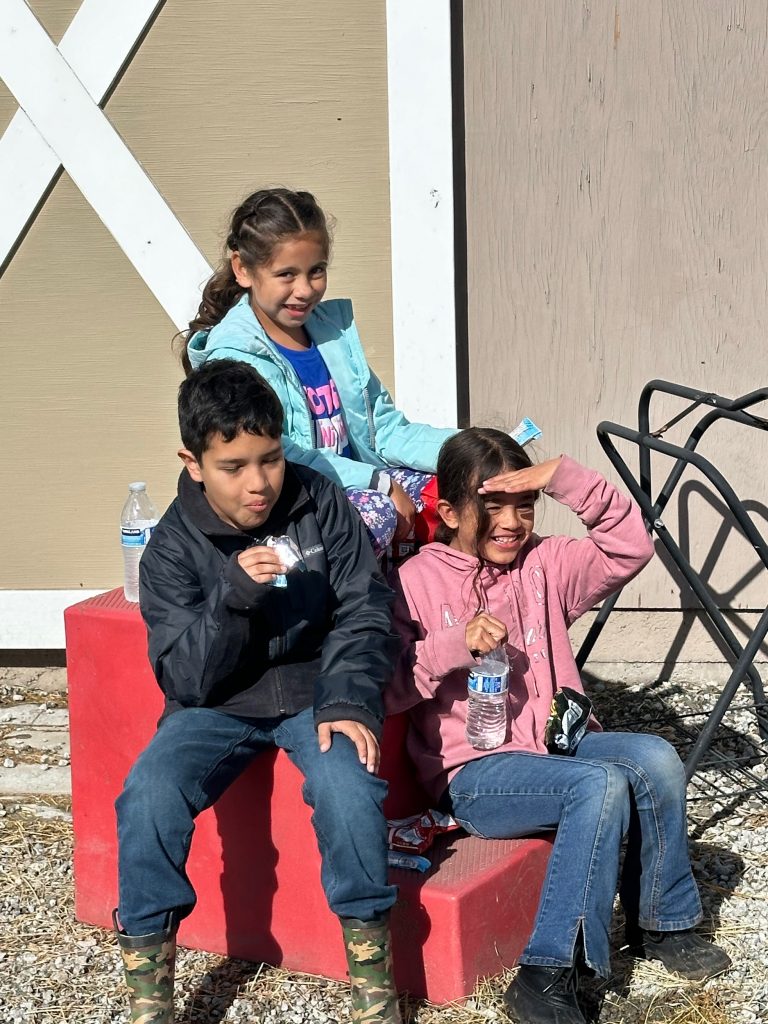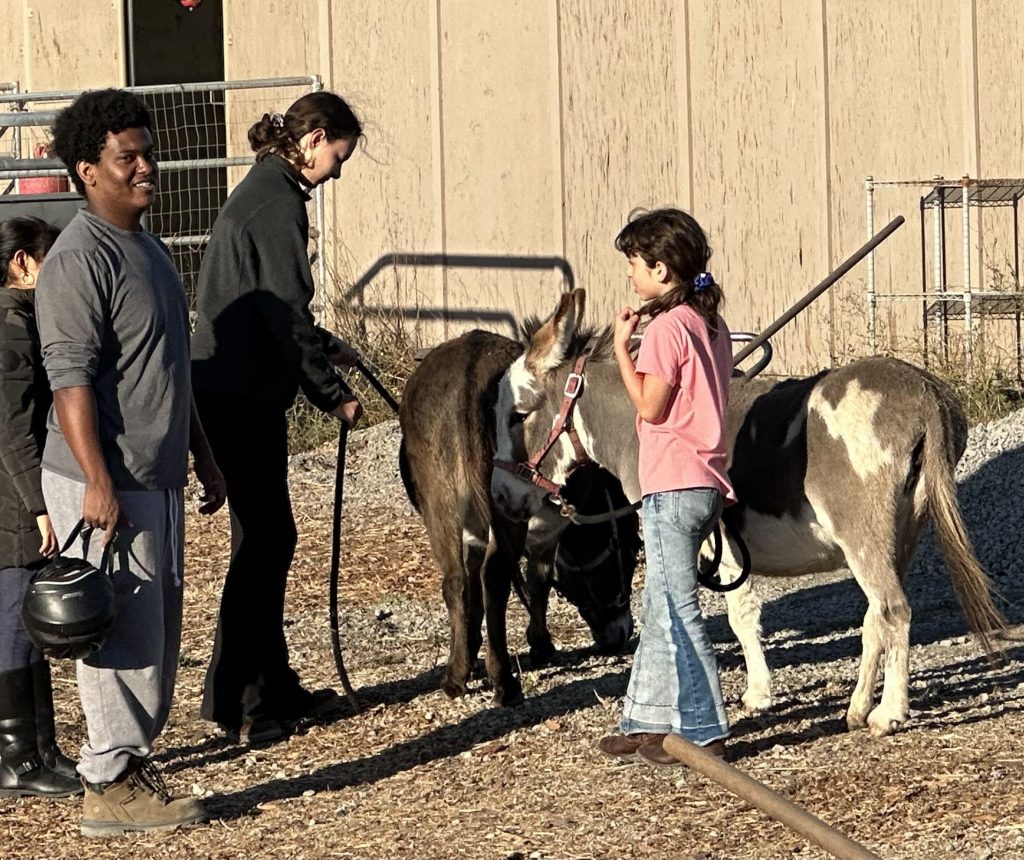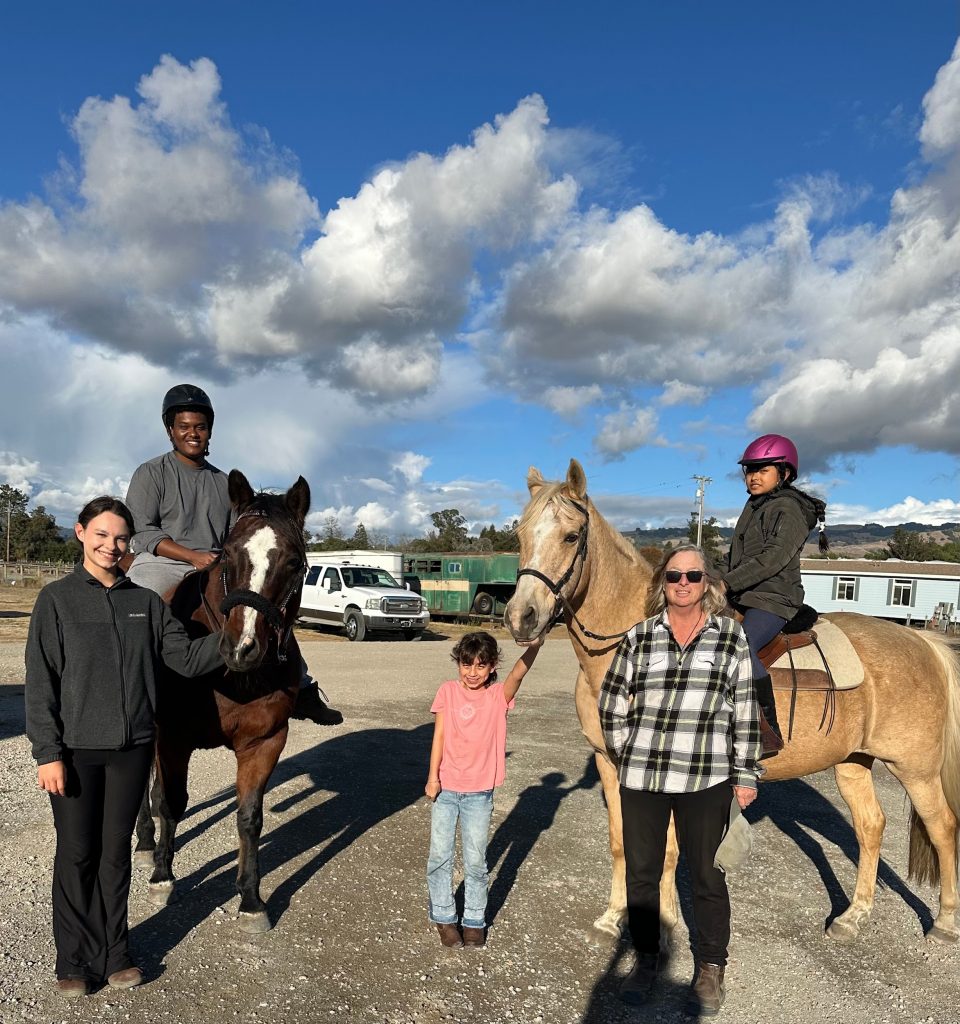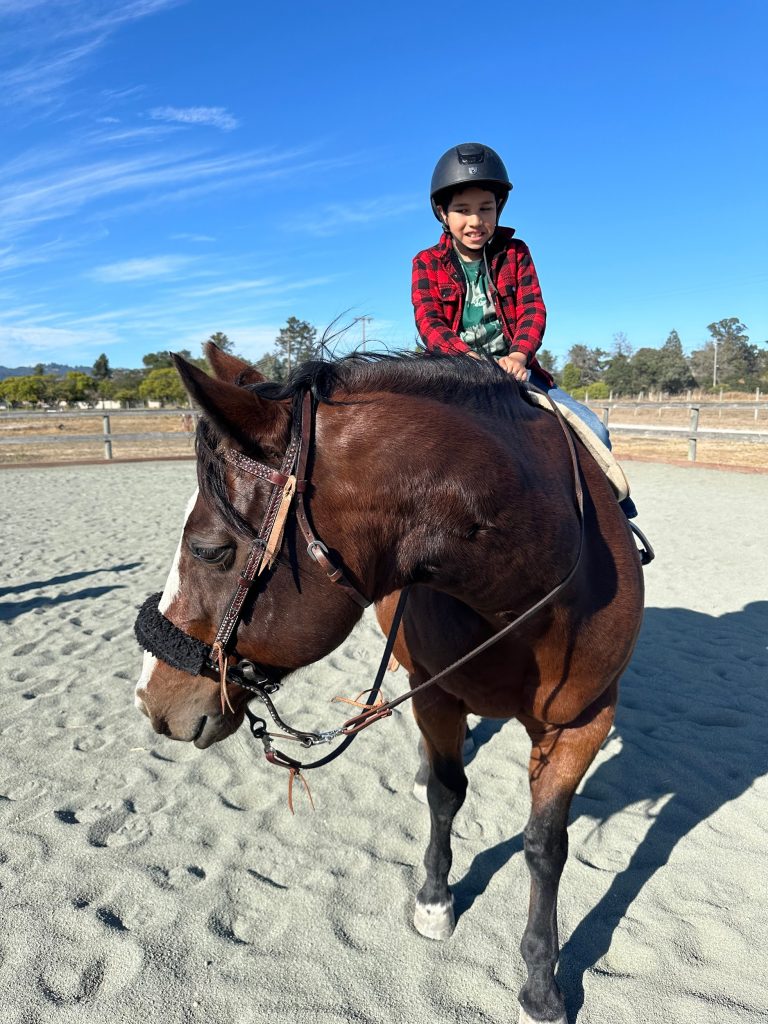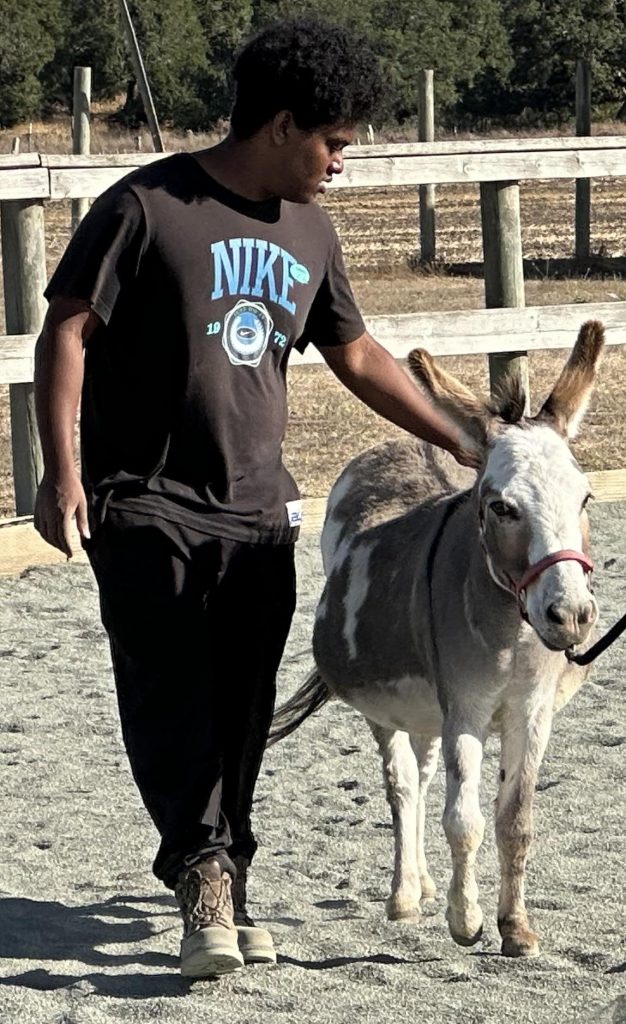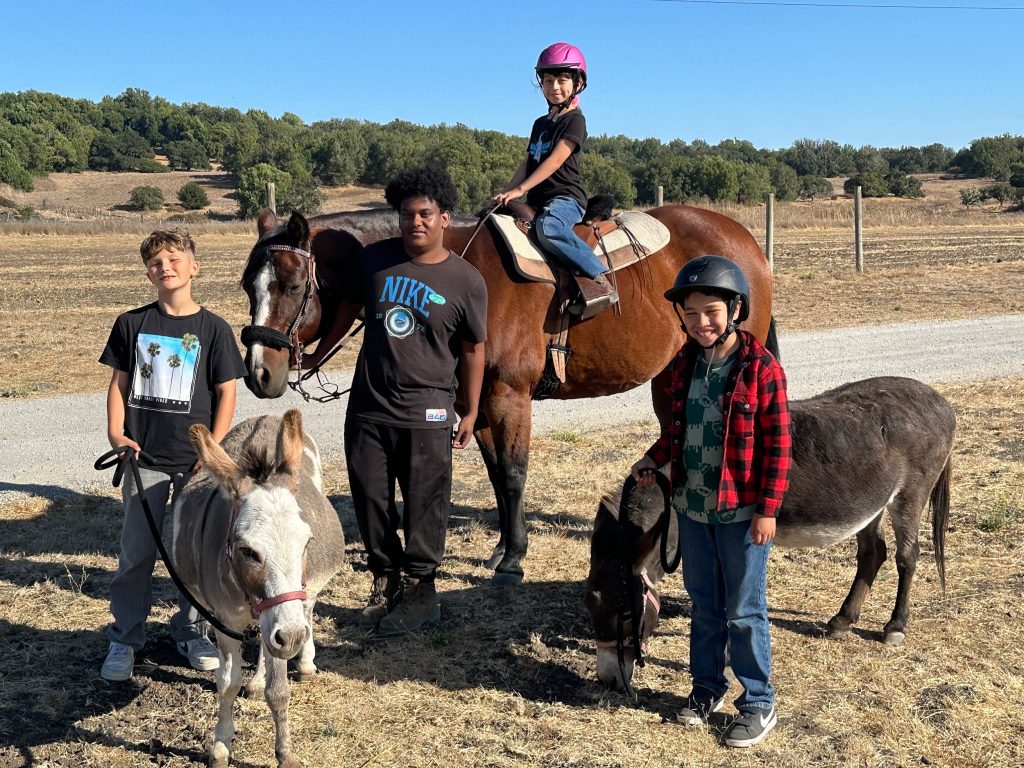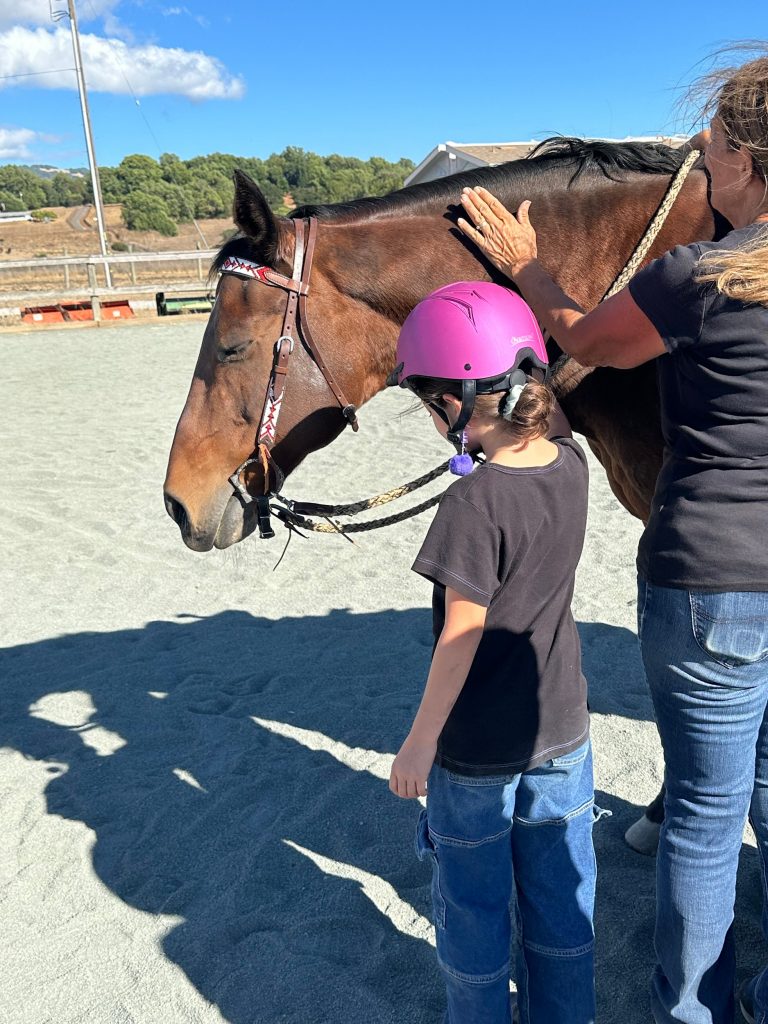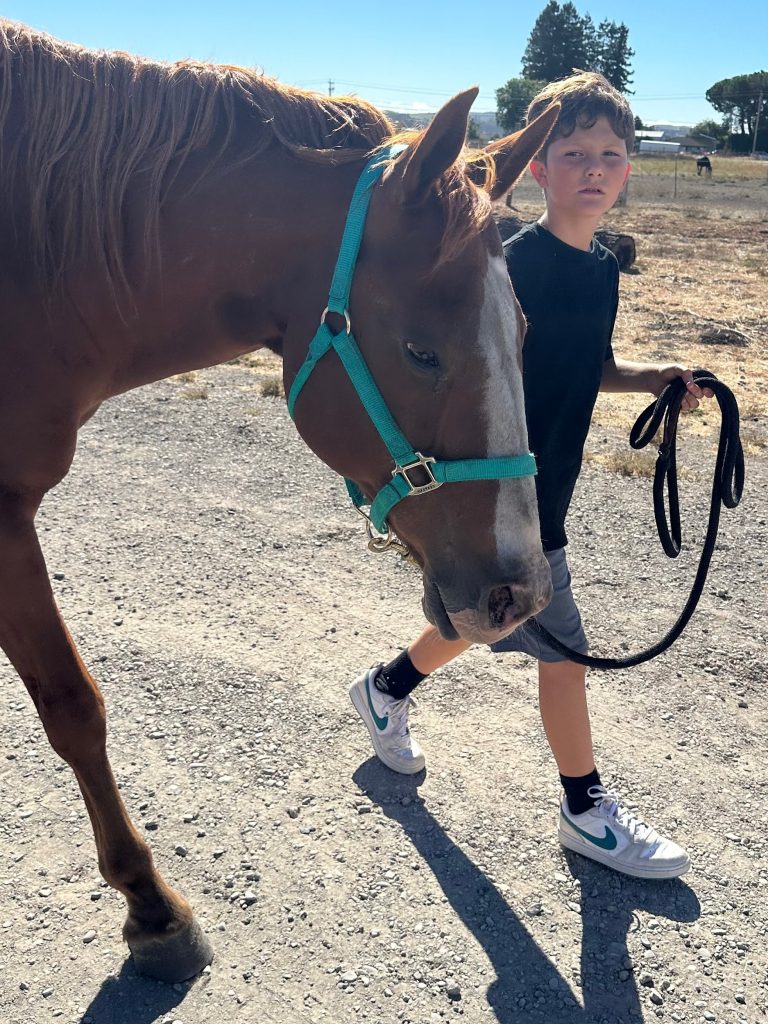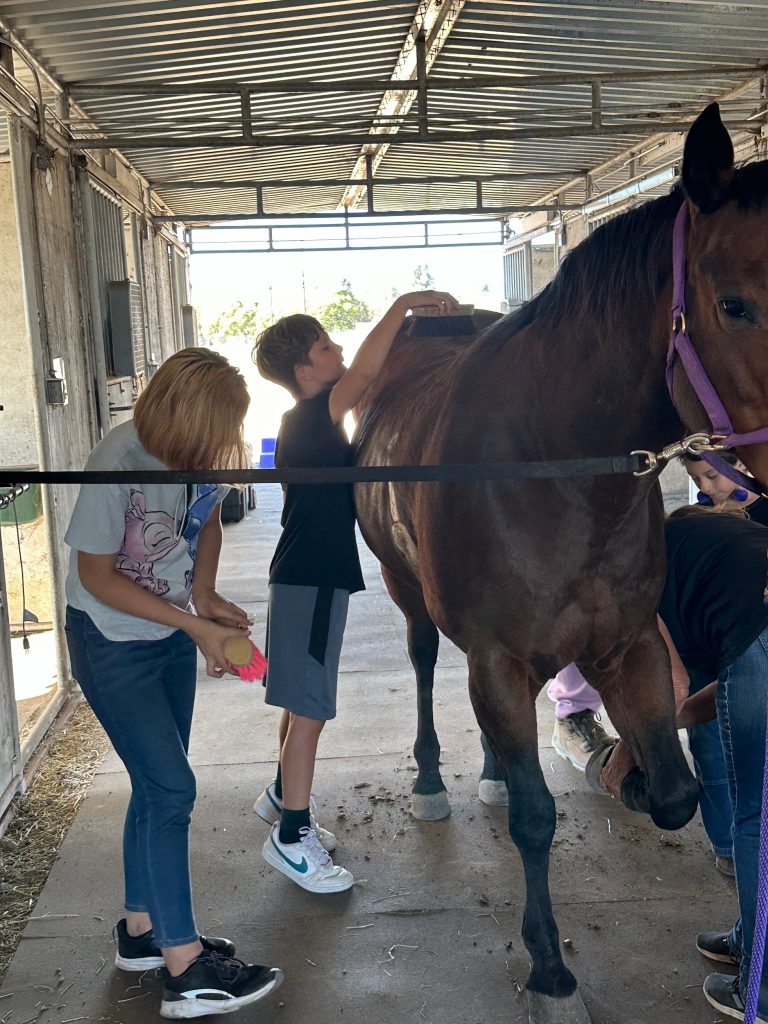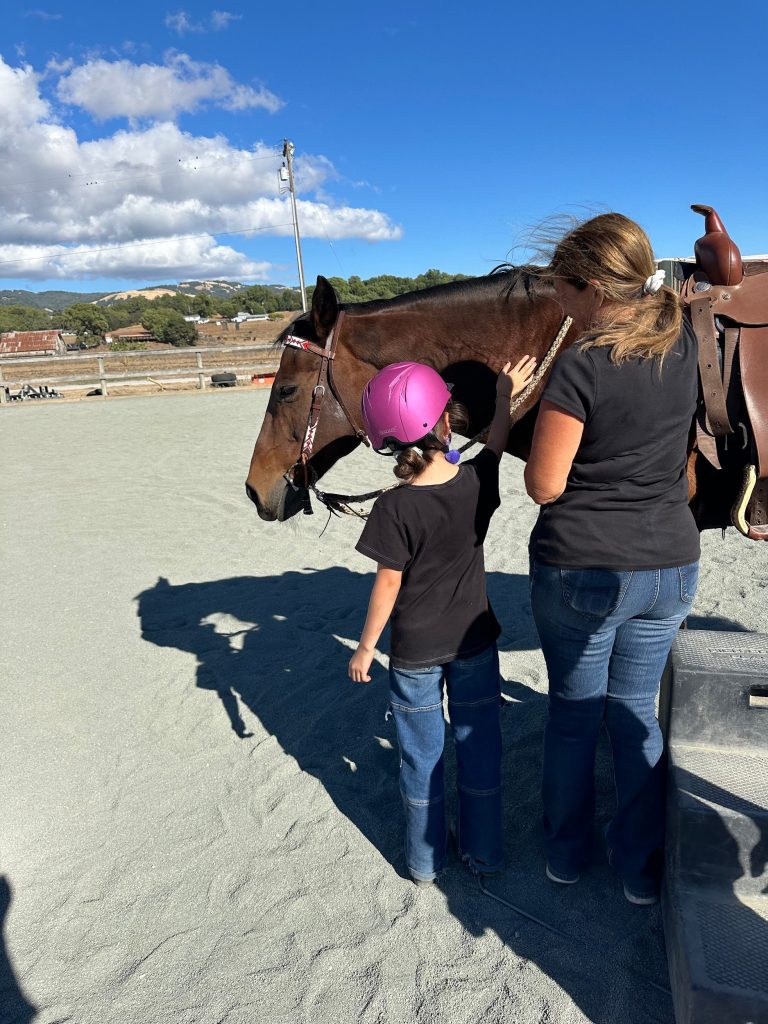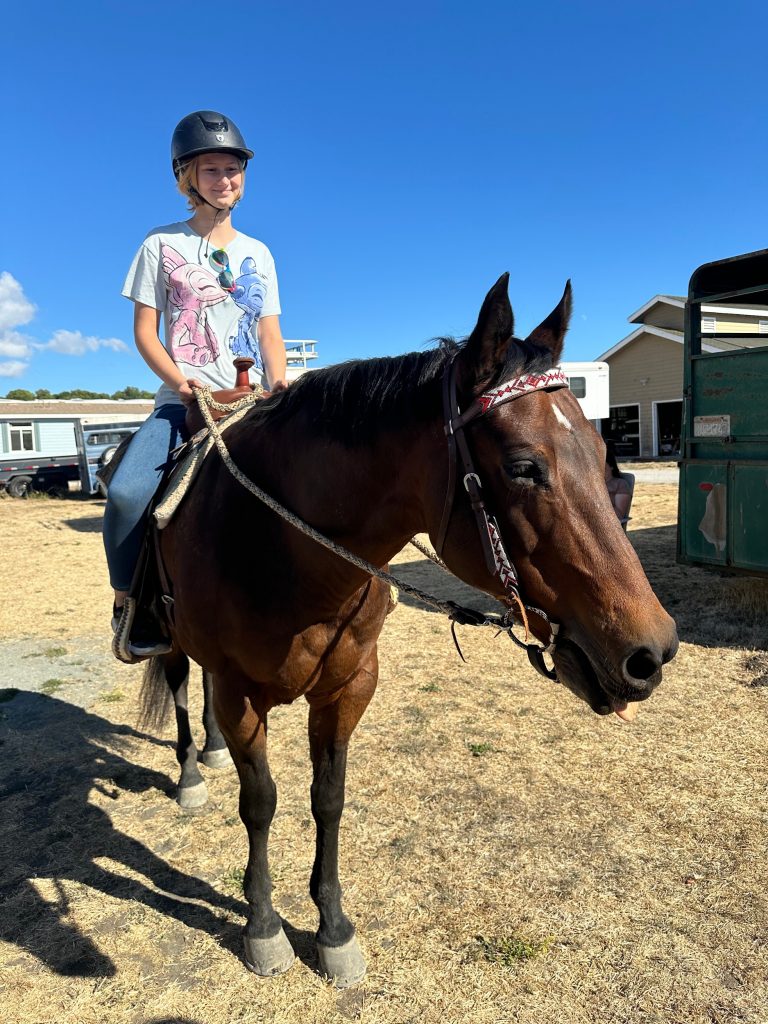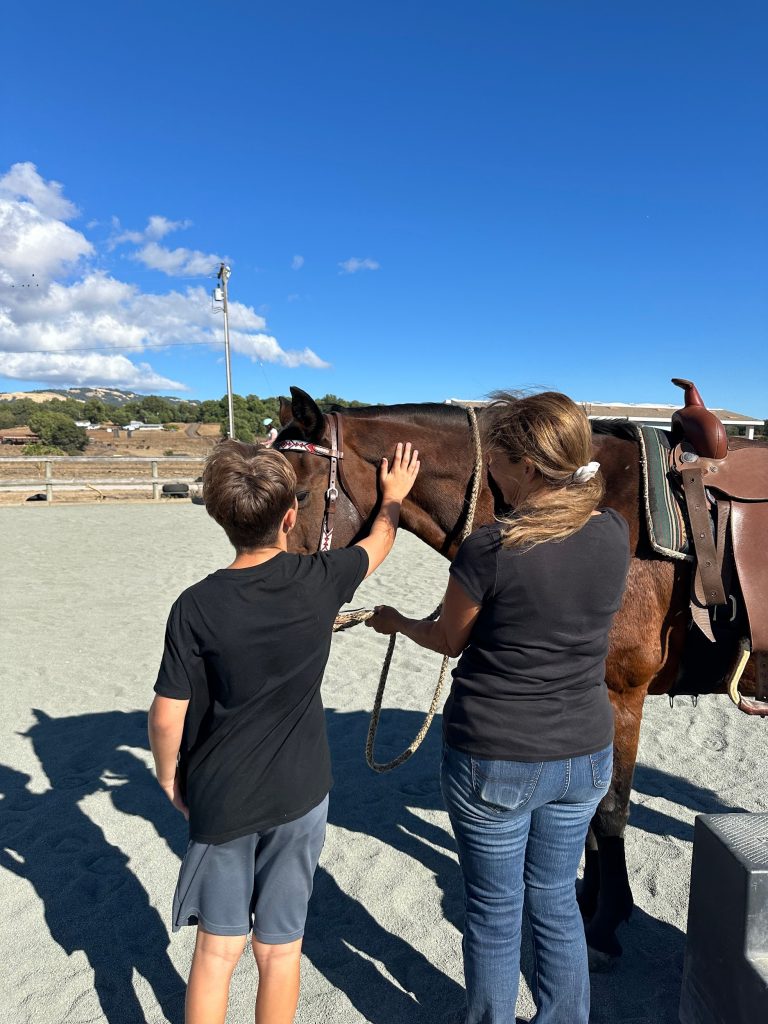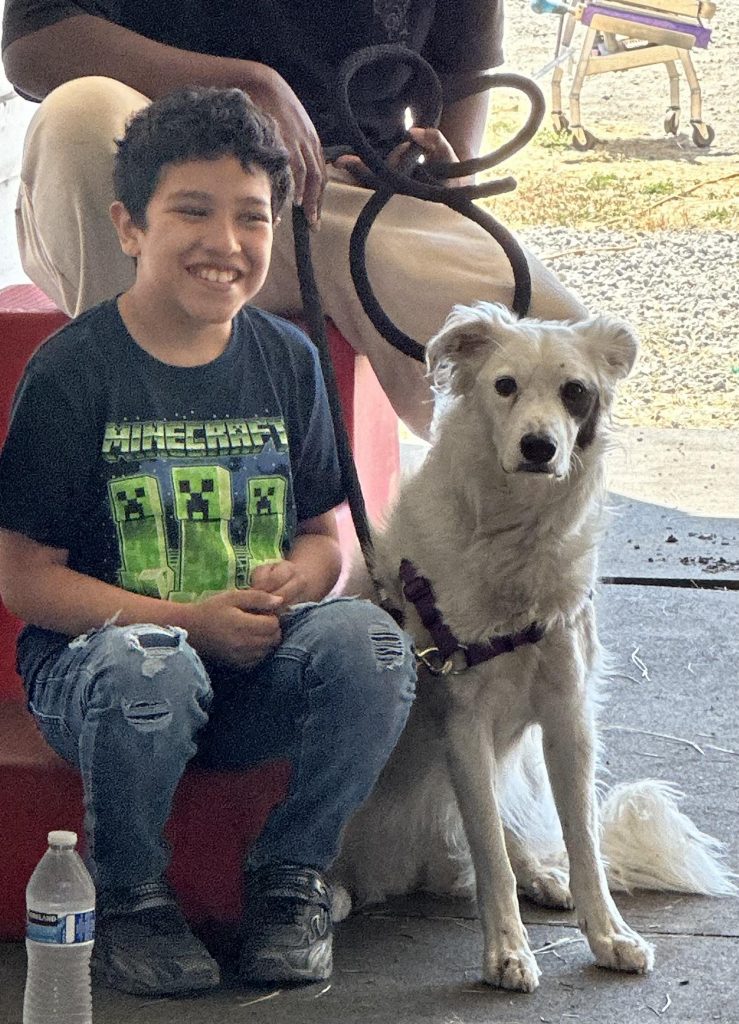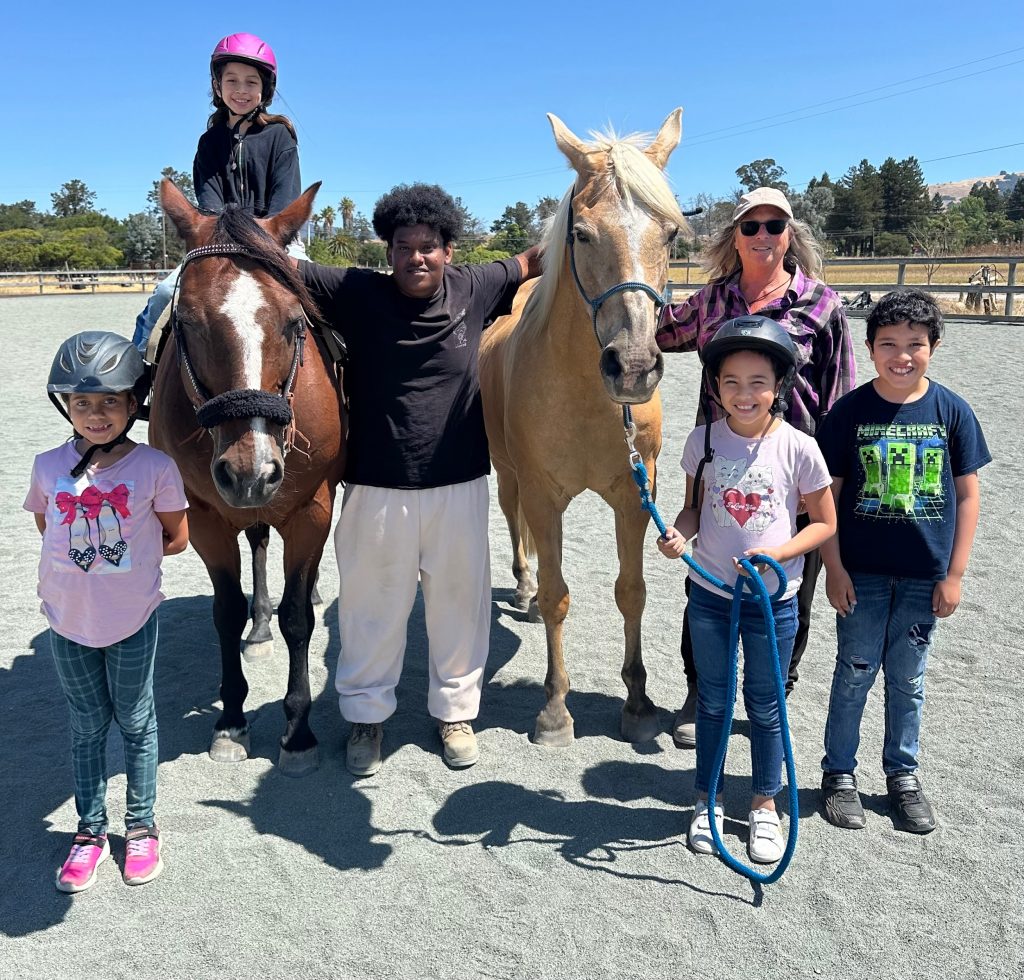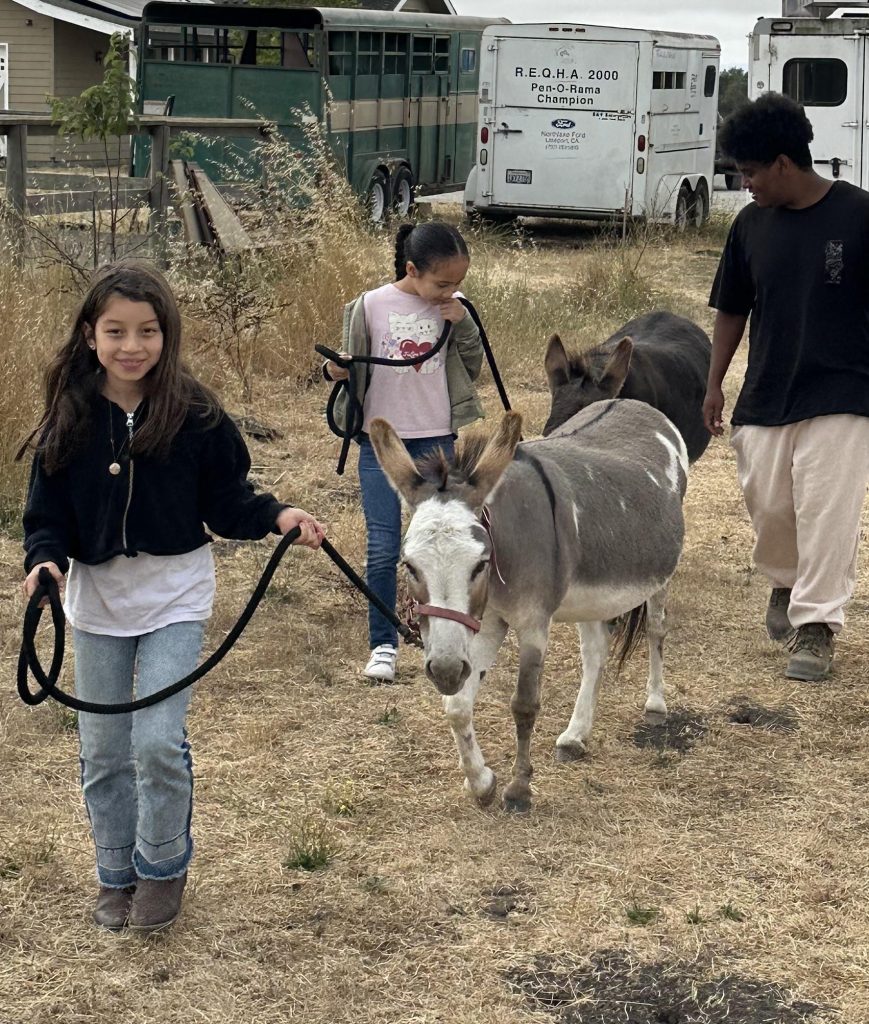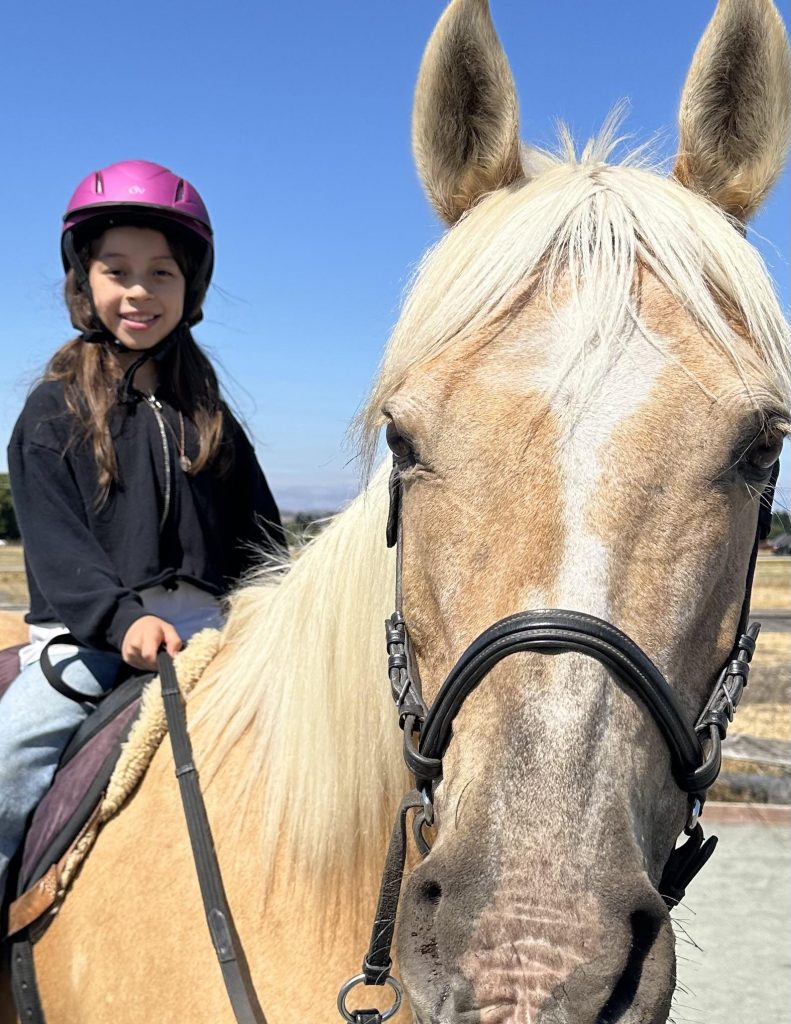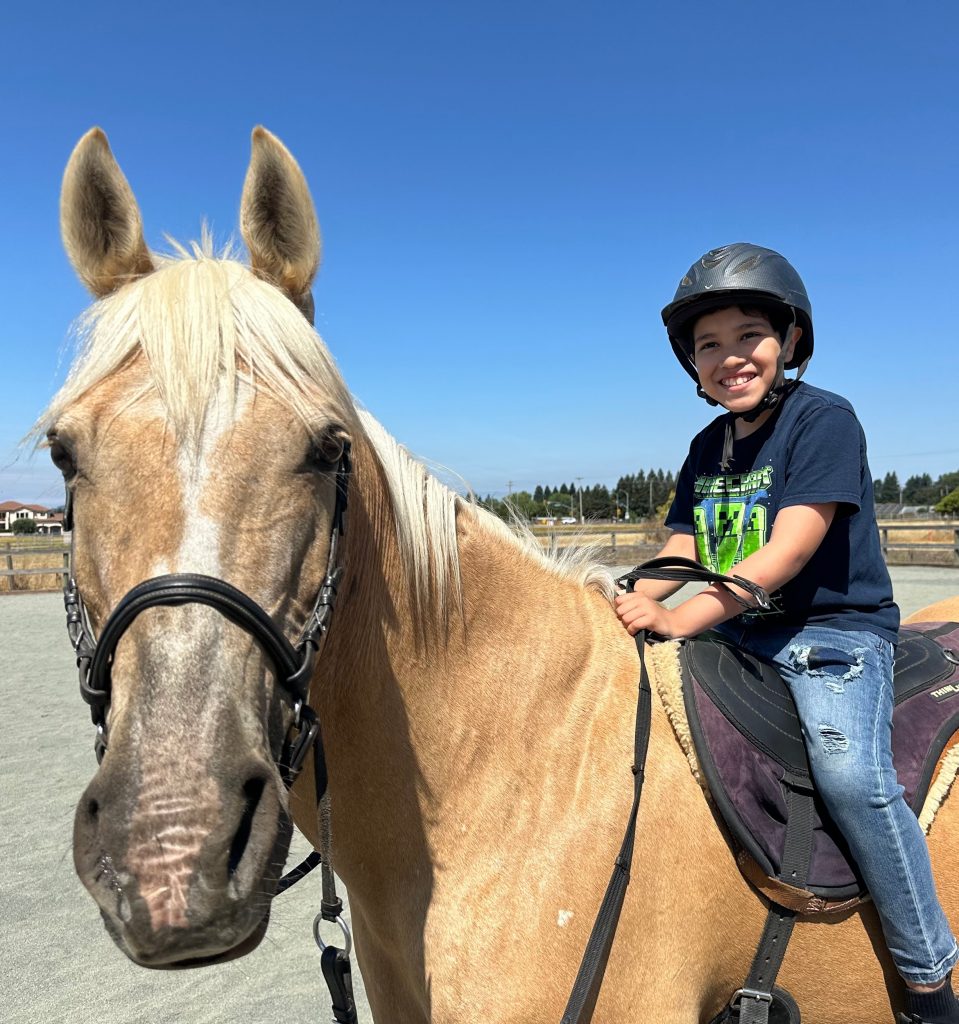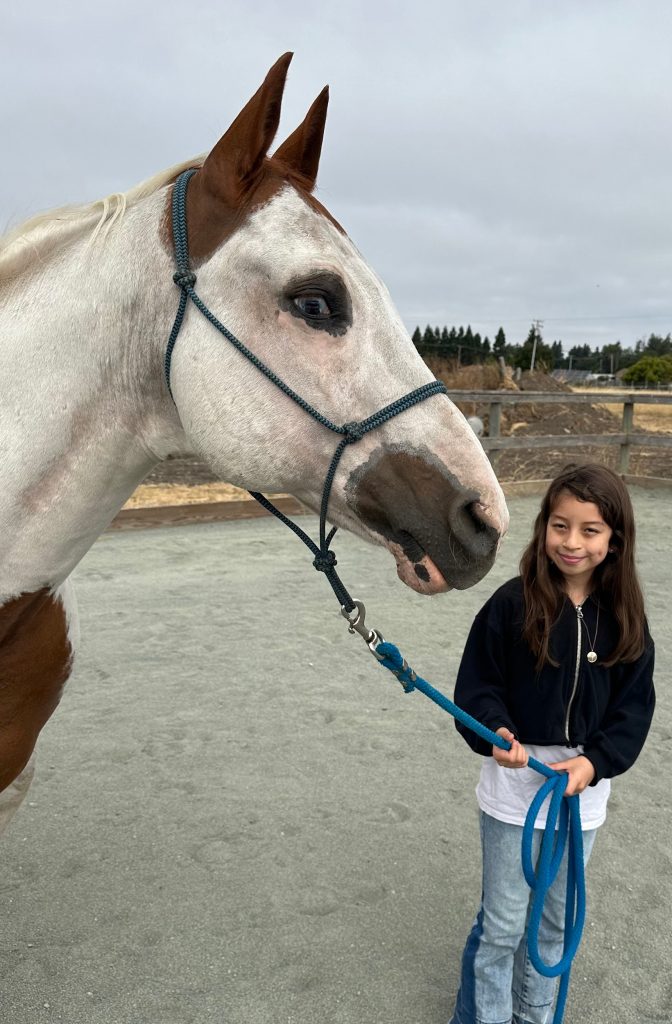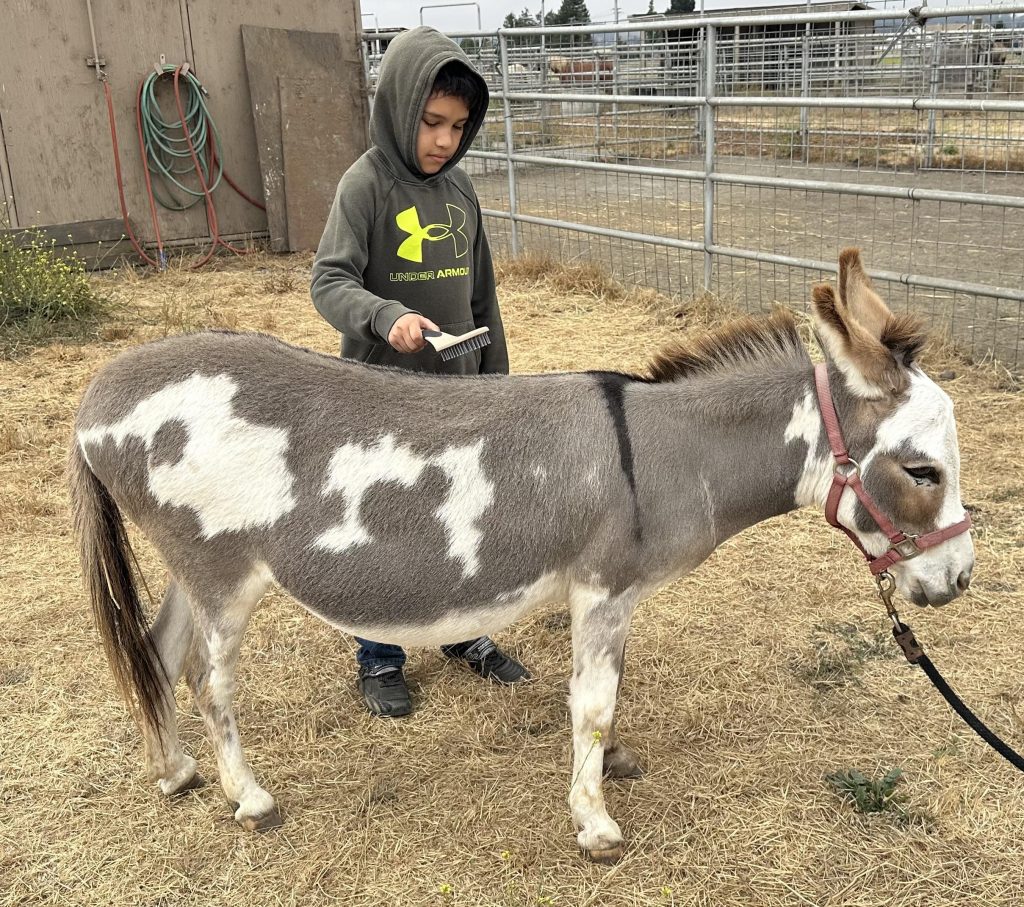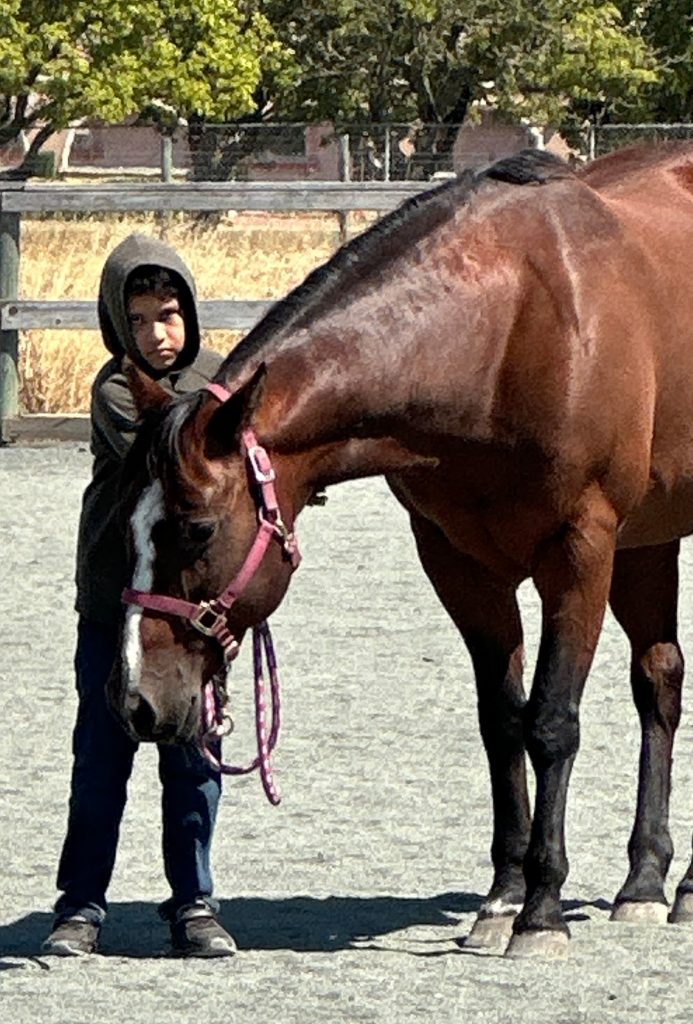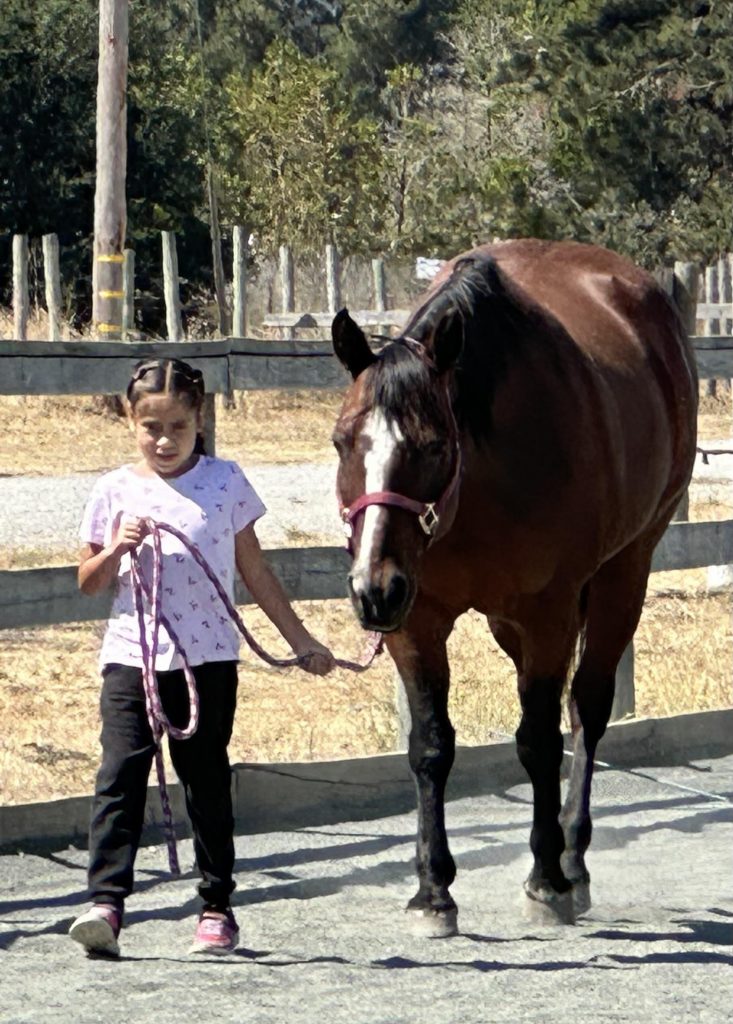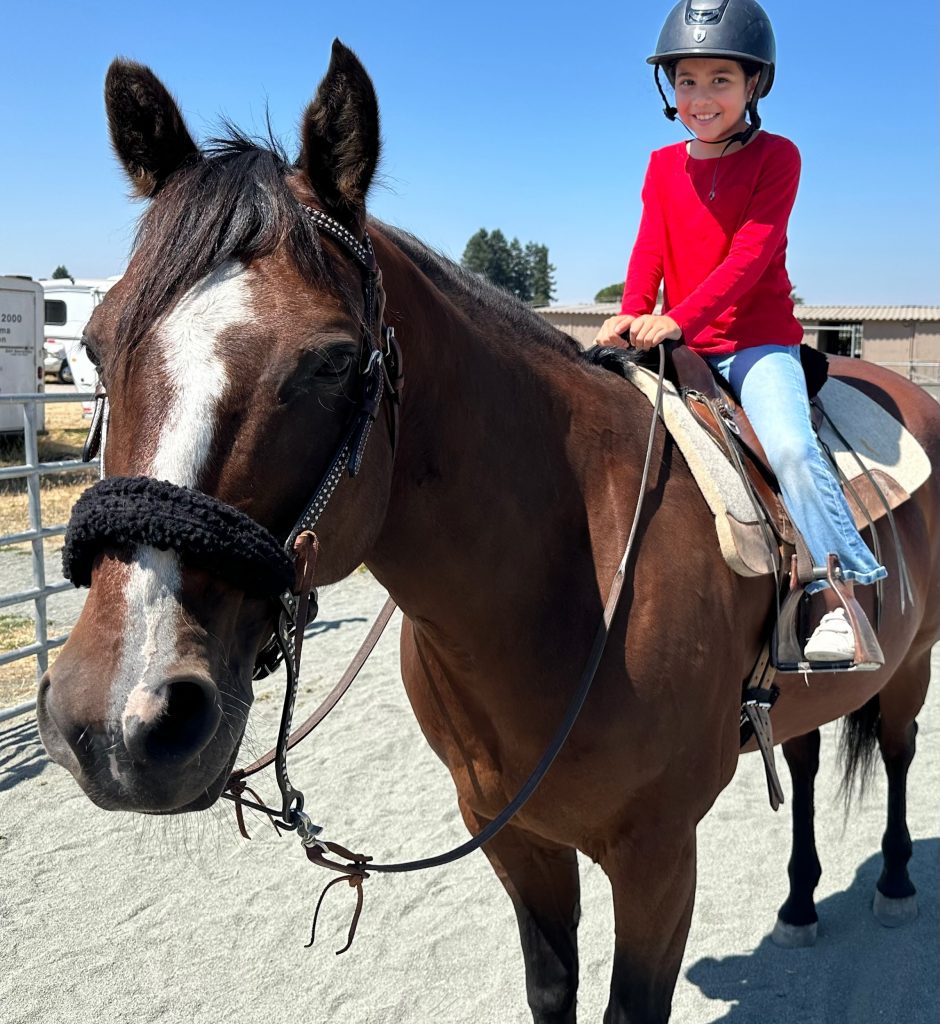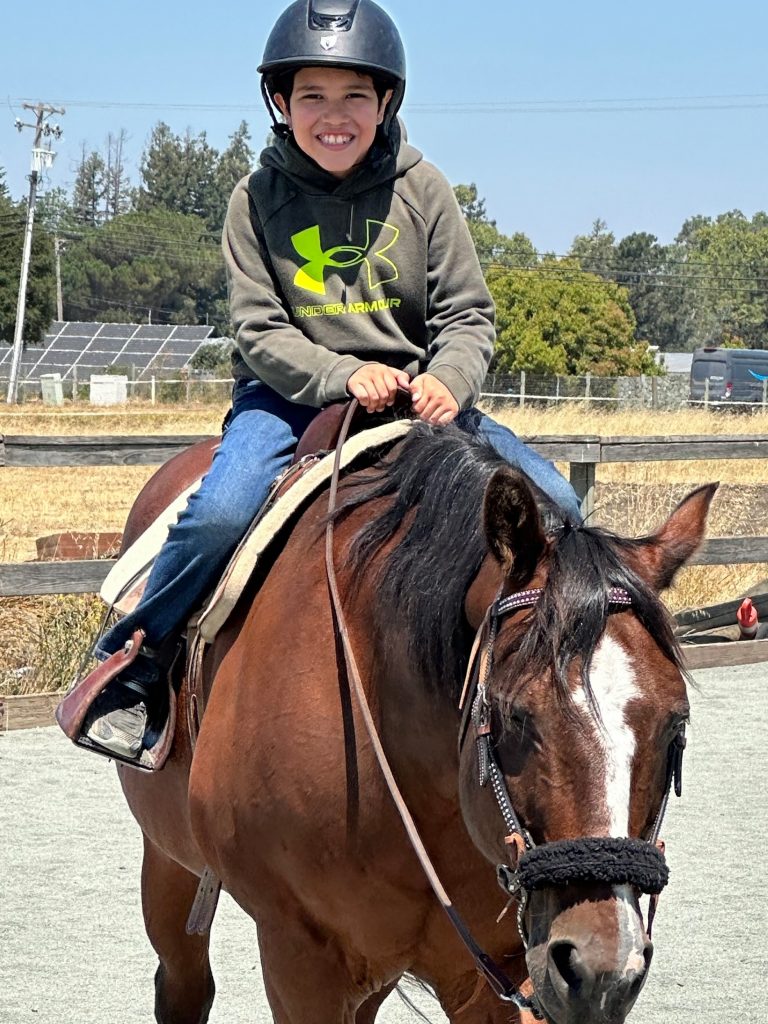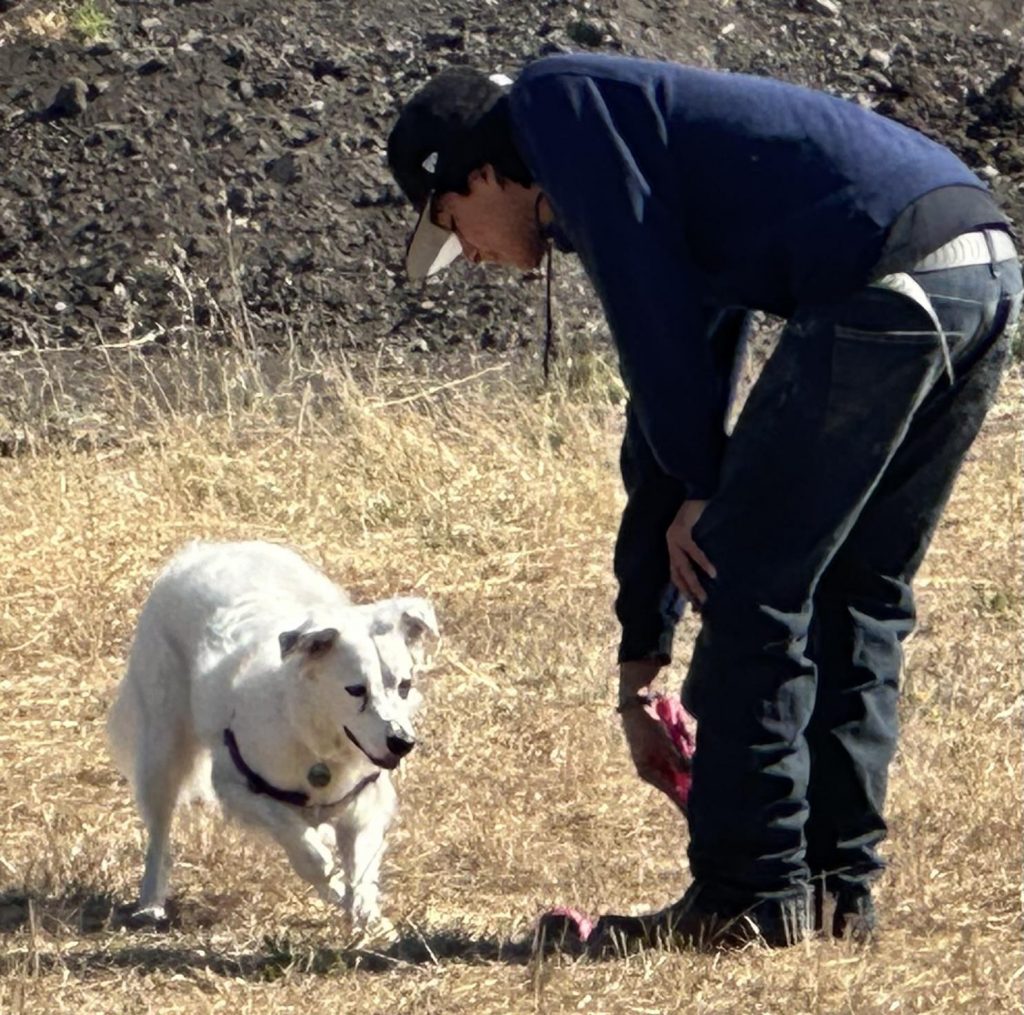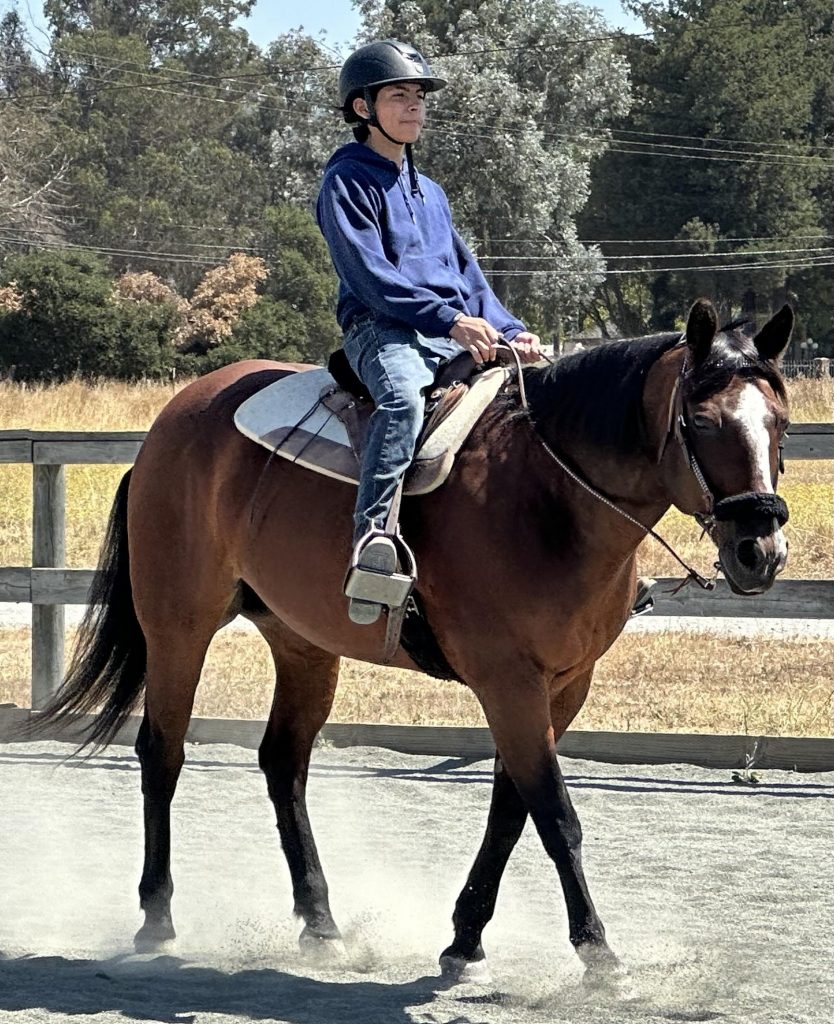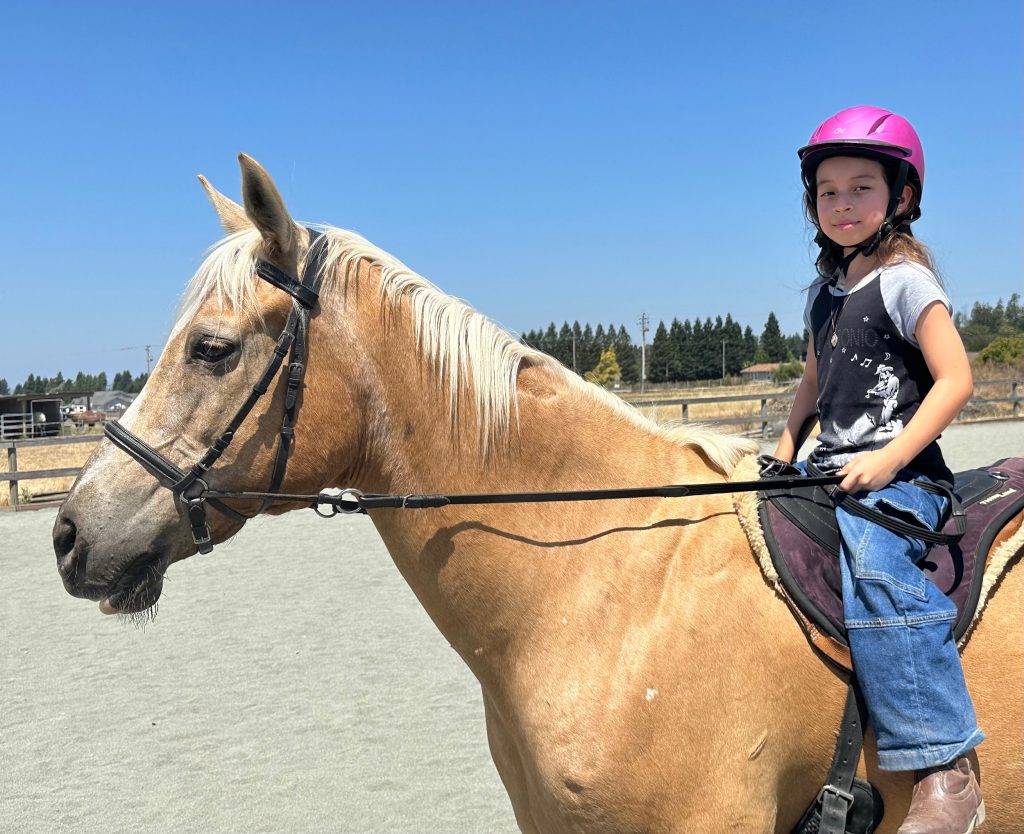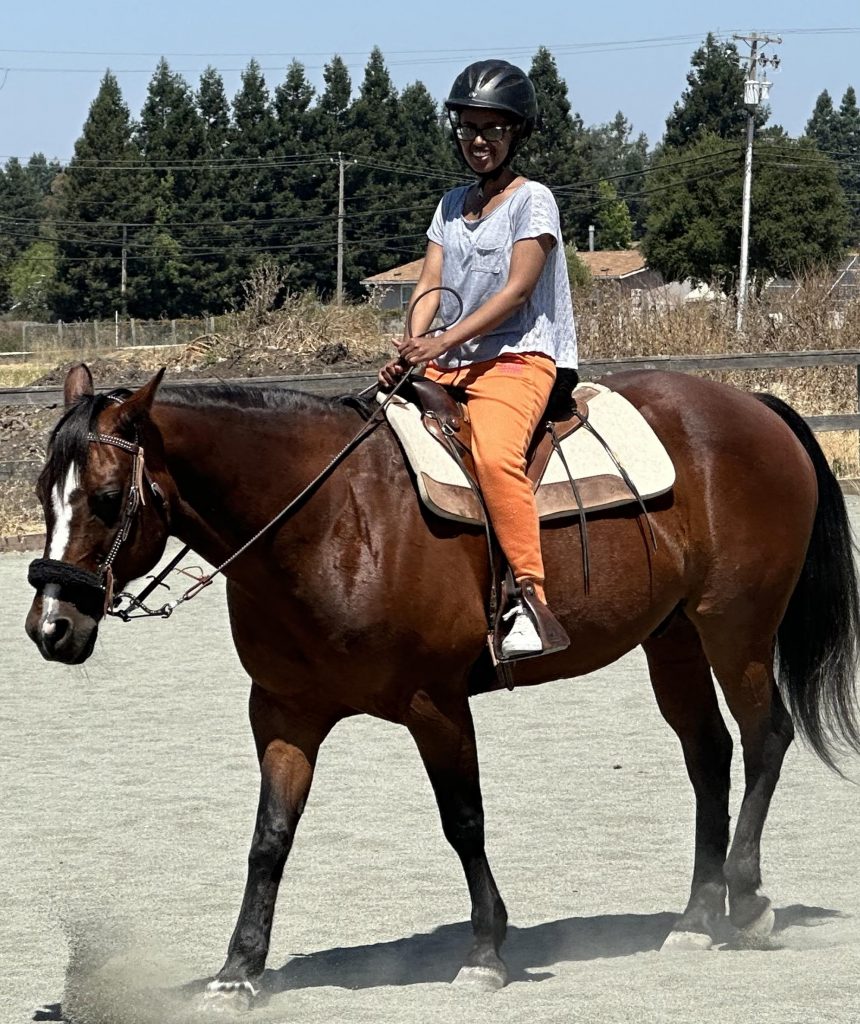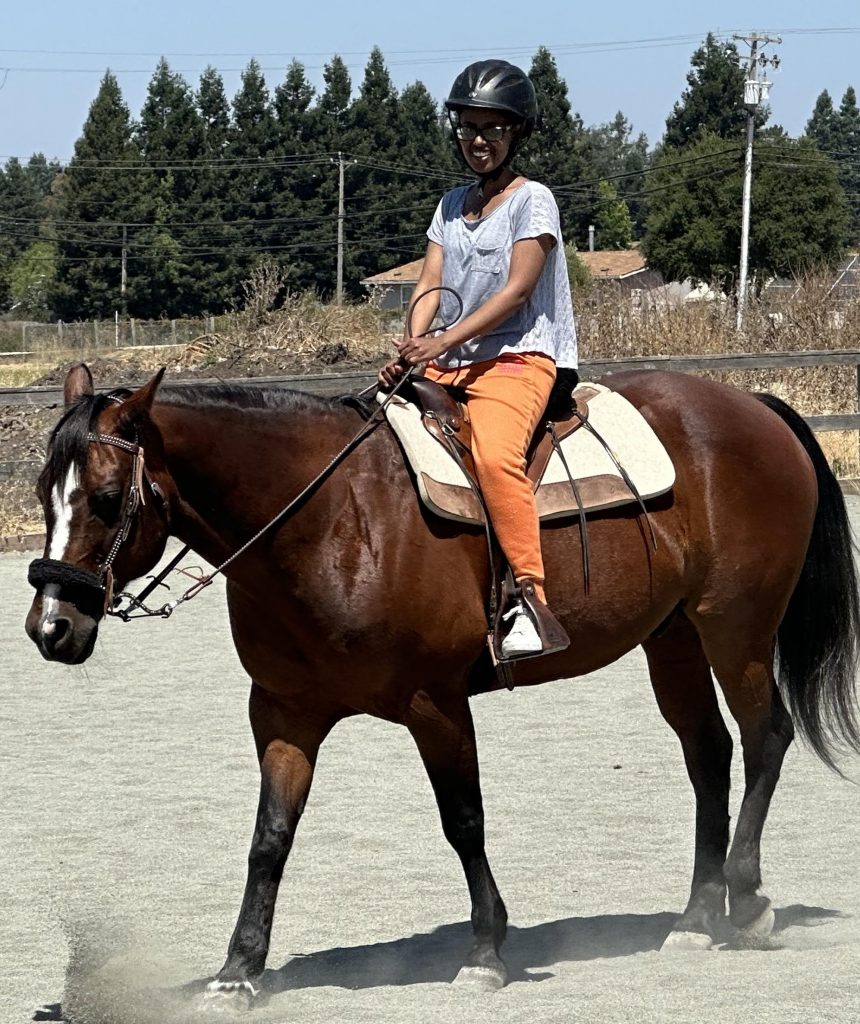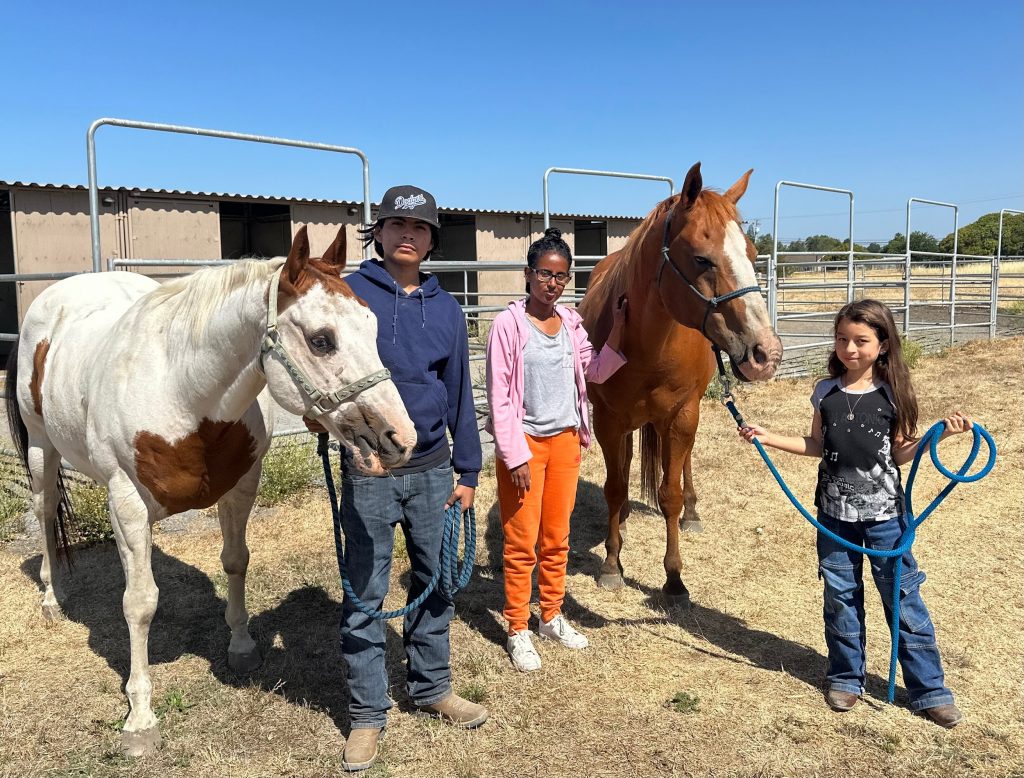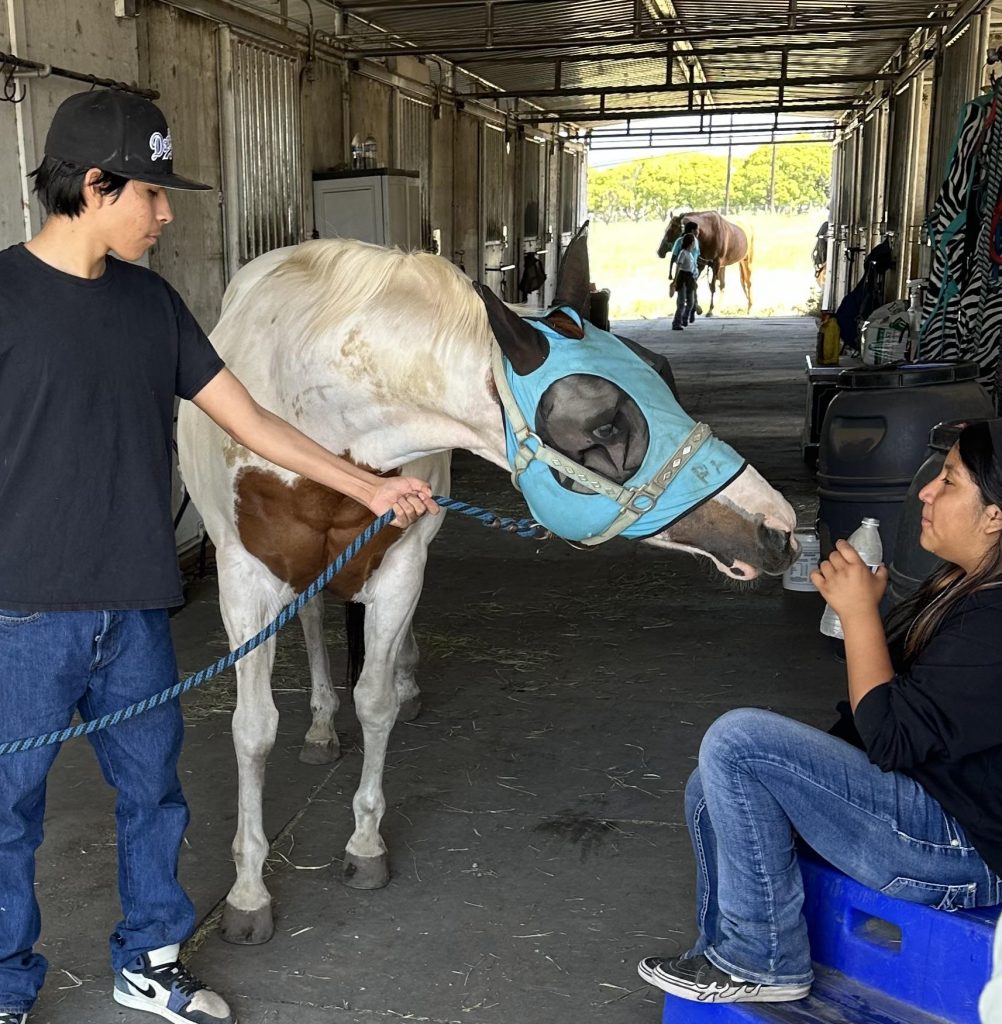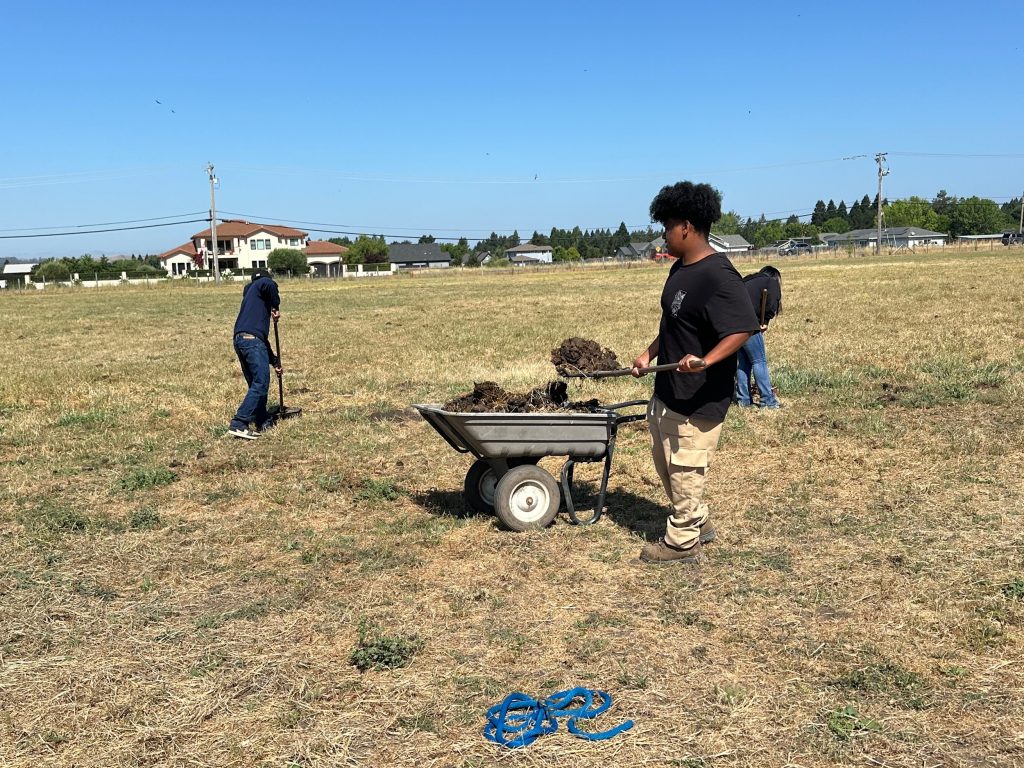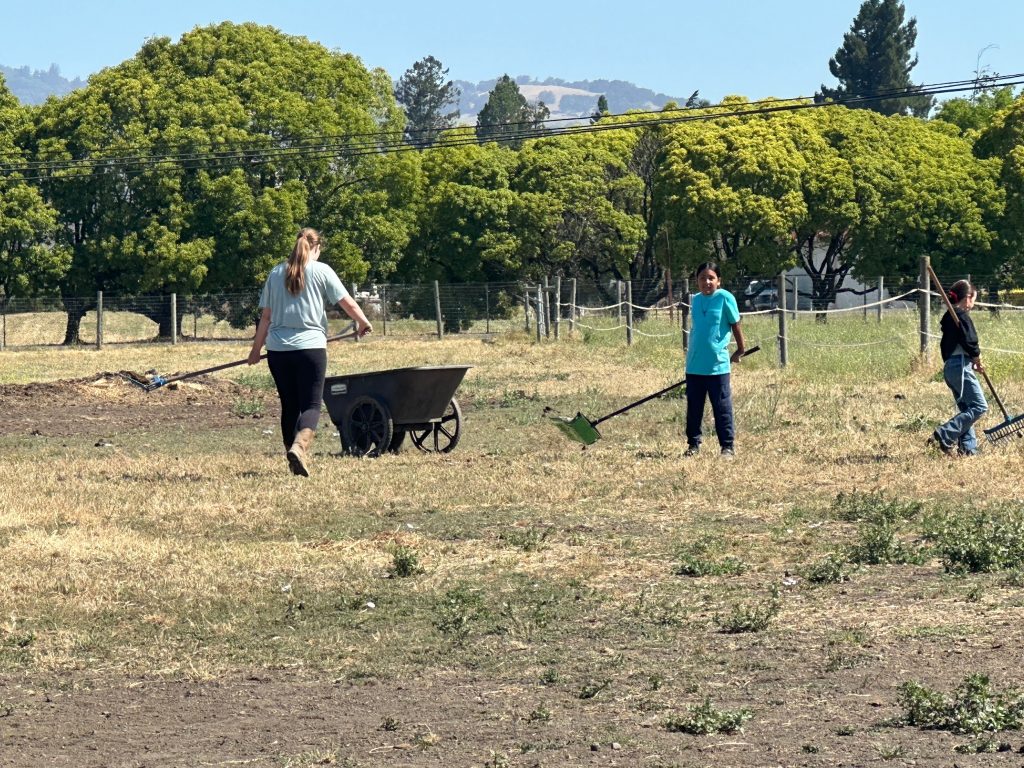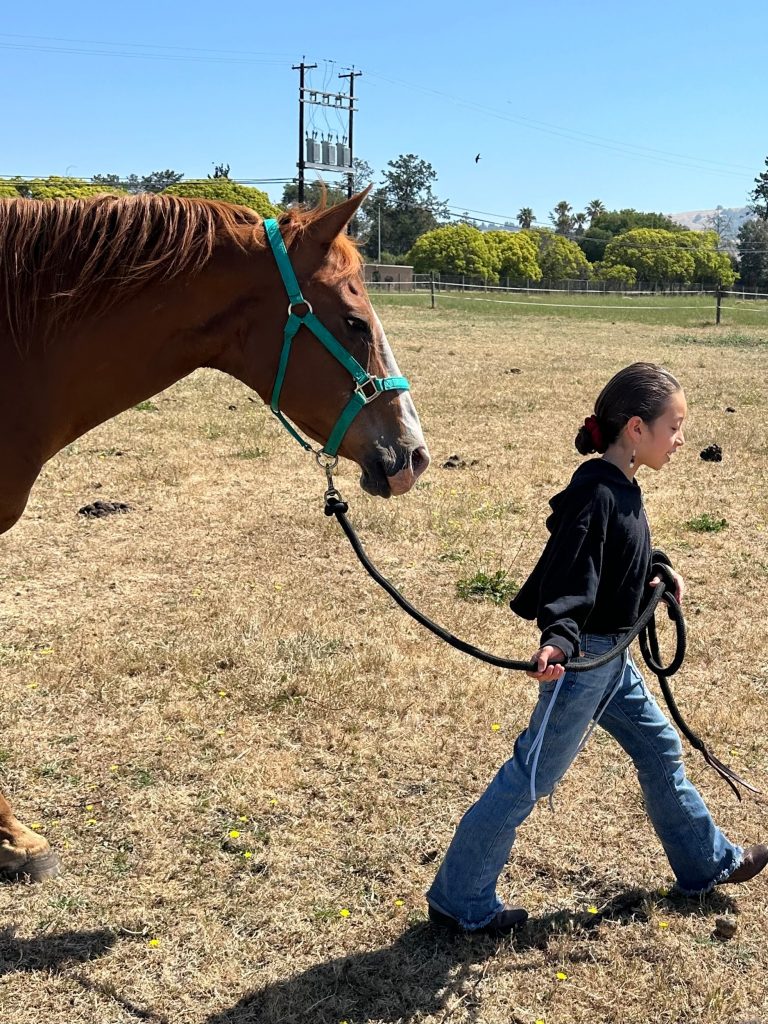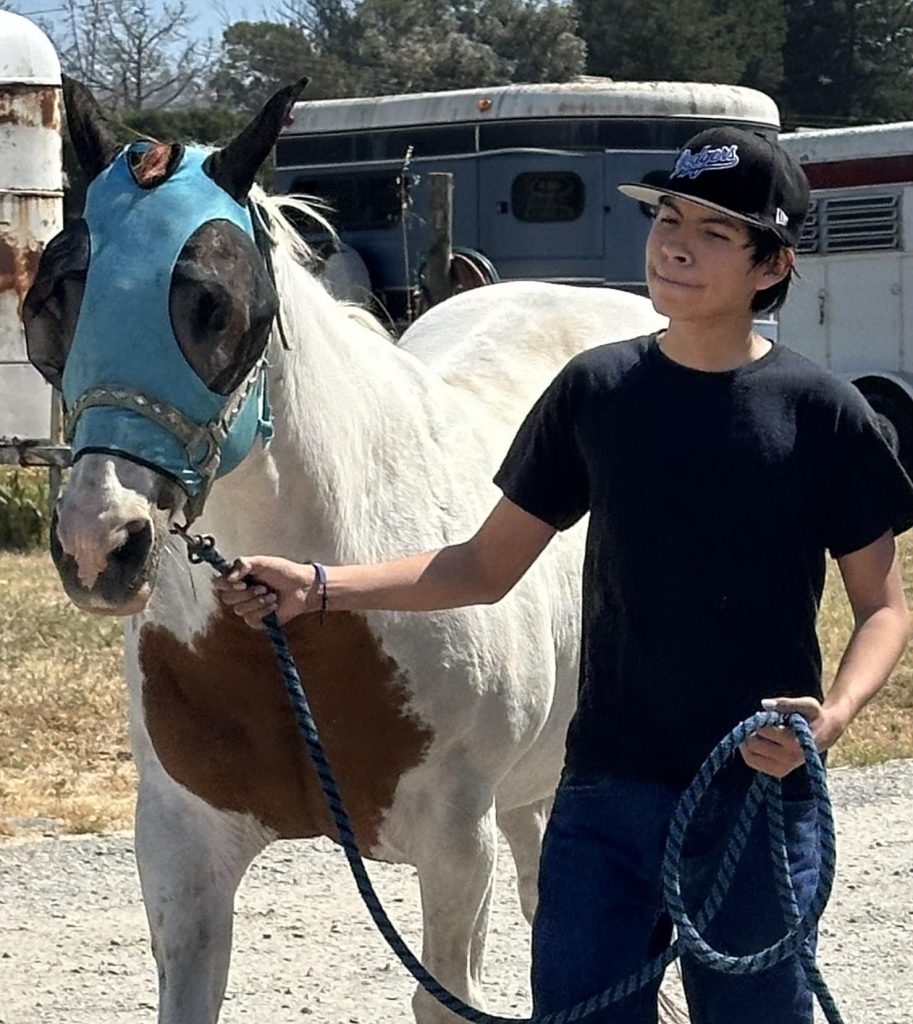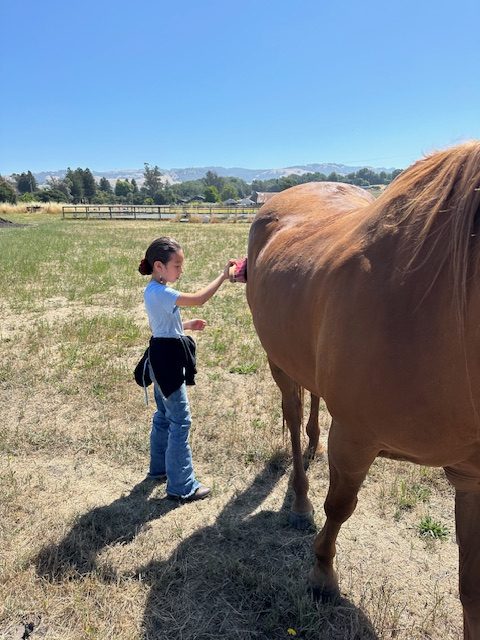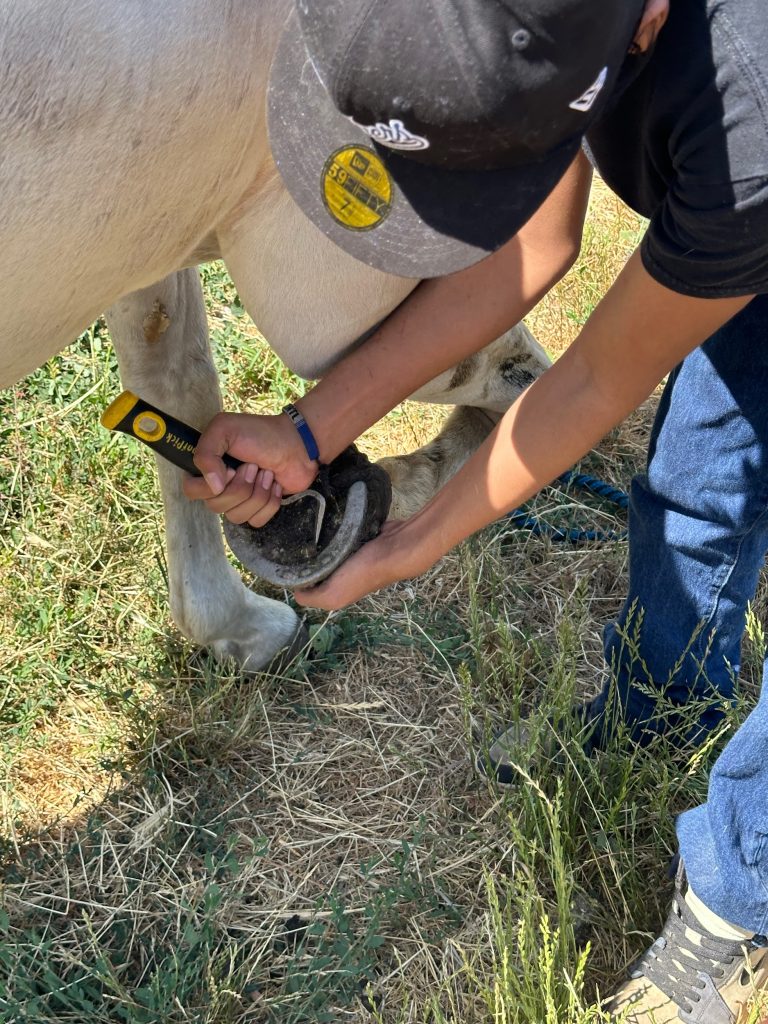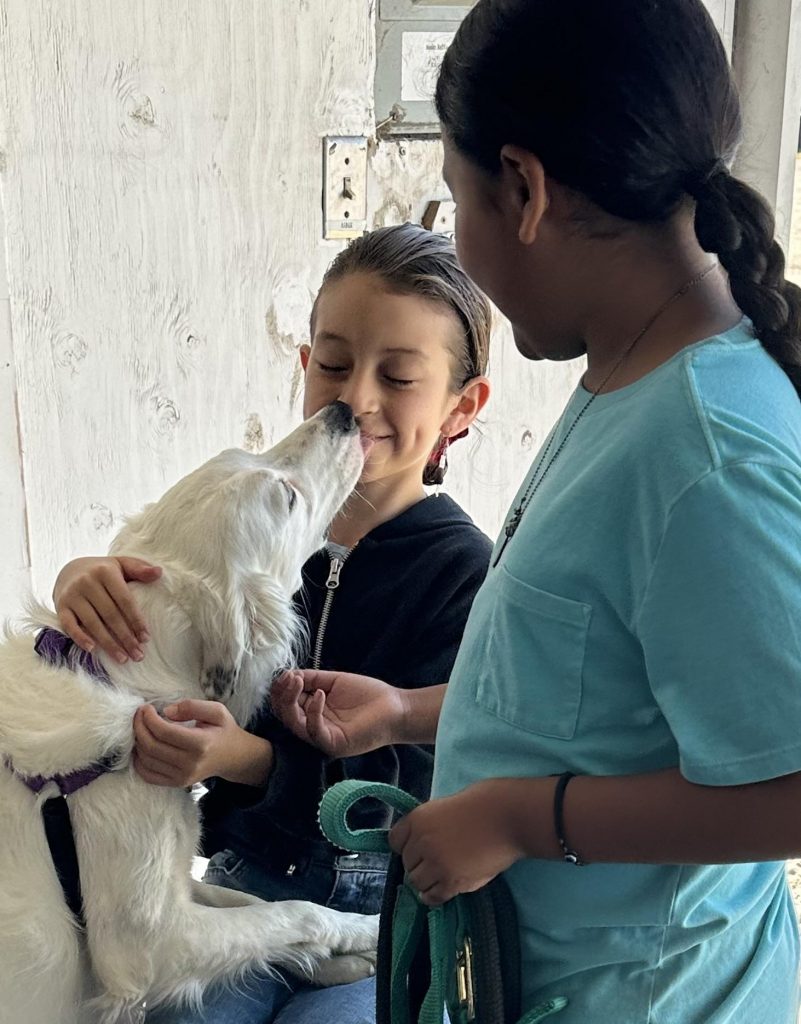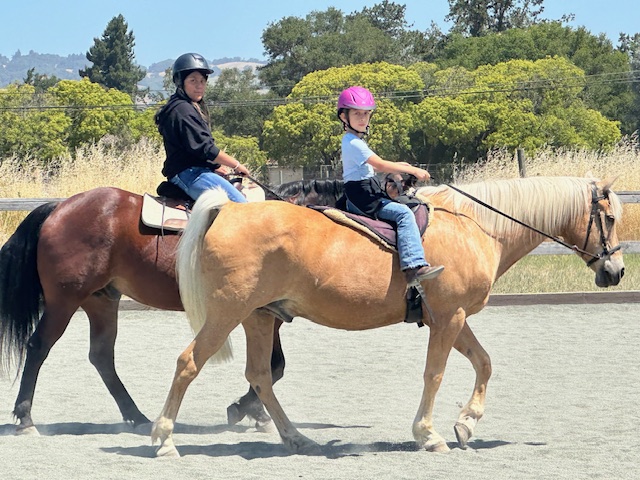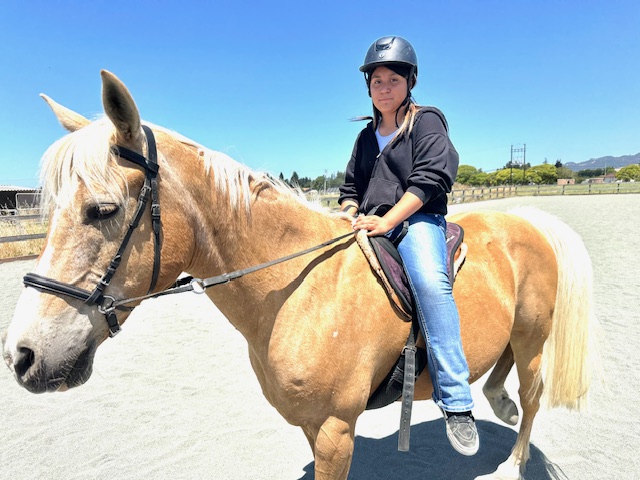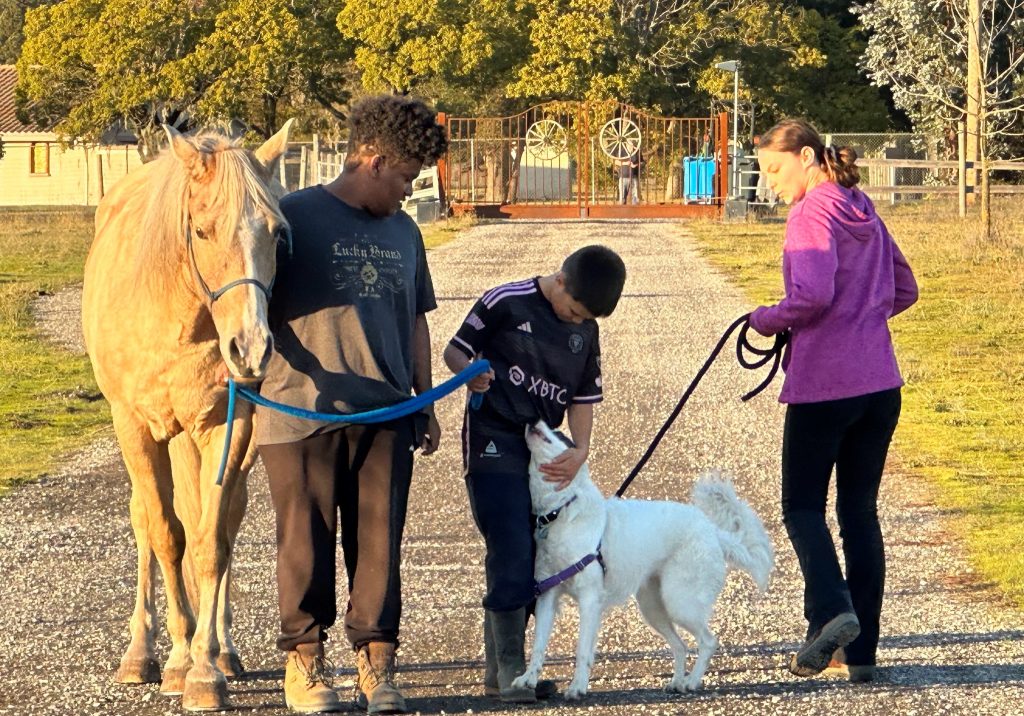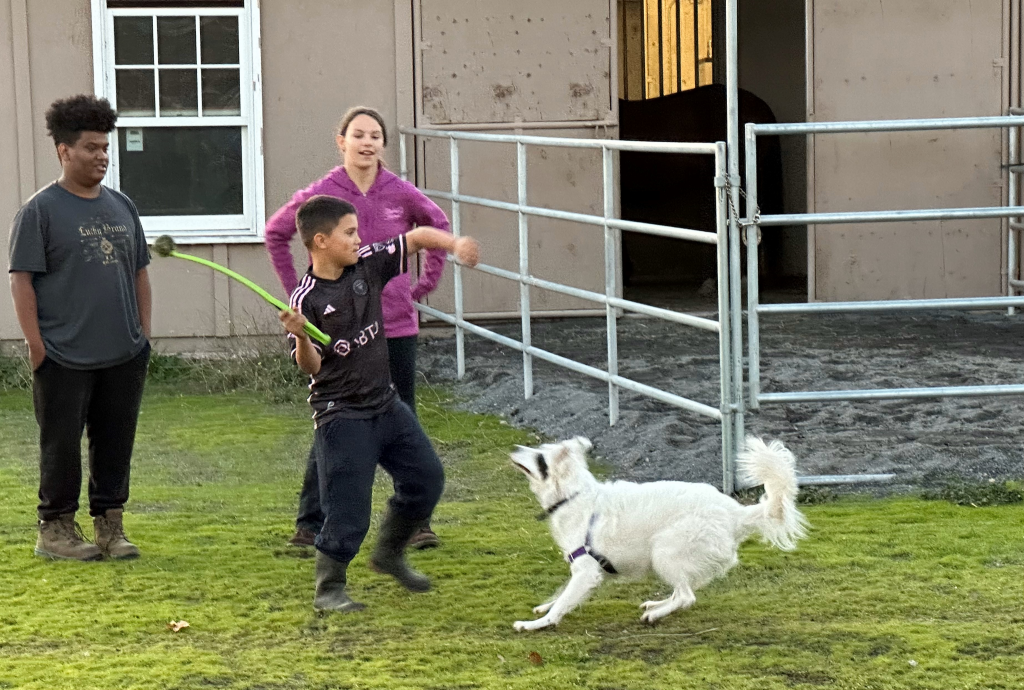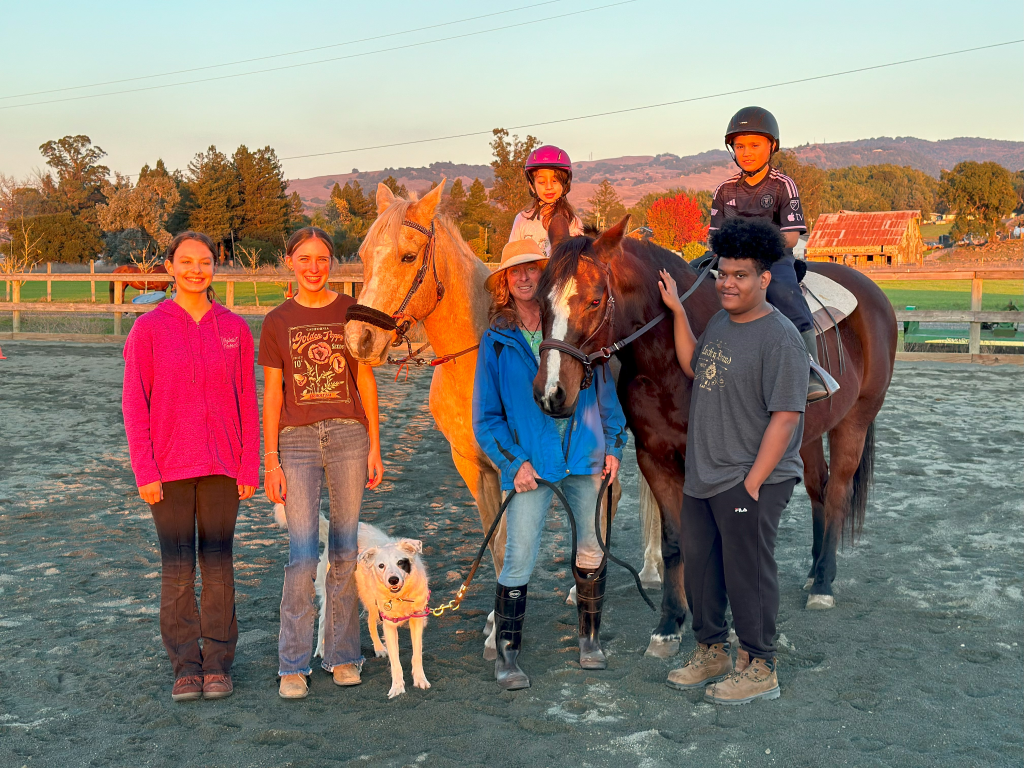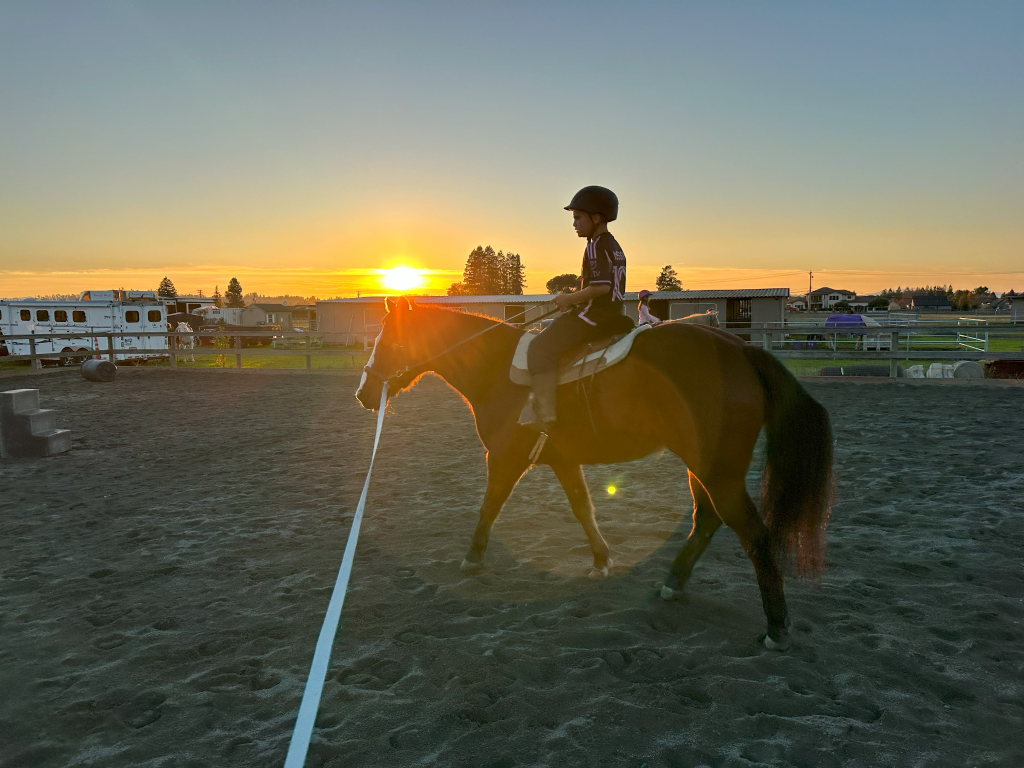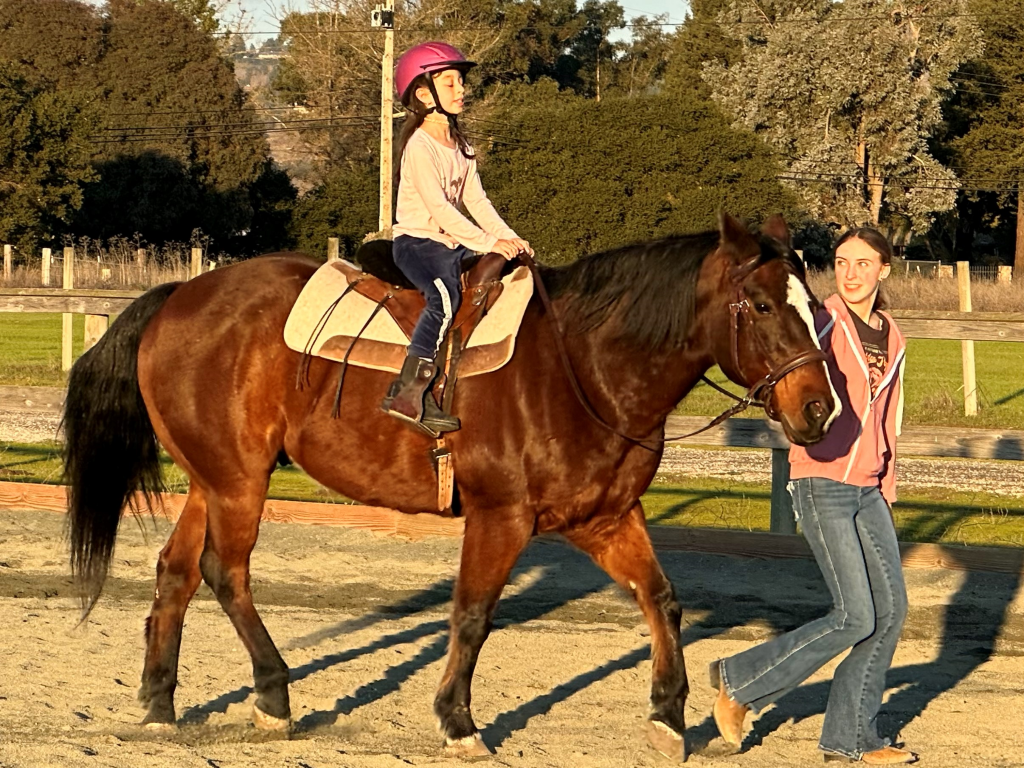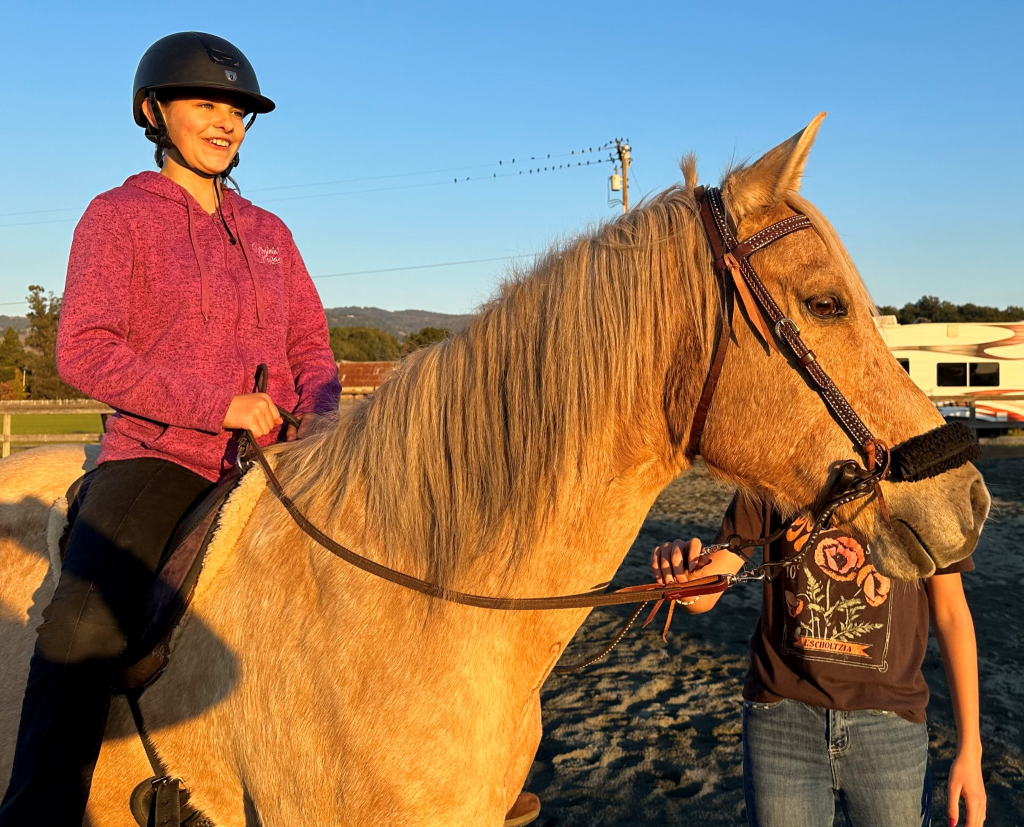Today we started with rain. I decided not to cancel and the rain only lasted for about 45 minutes. While it rained, we all got on mud boots and started our program inside the barn. First we spent time with the mini donkeys, Daisy & Fiona.
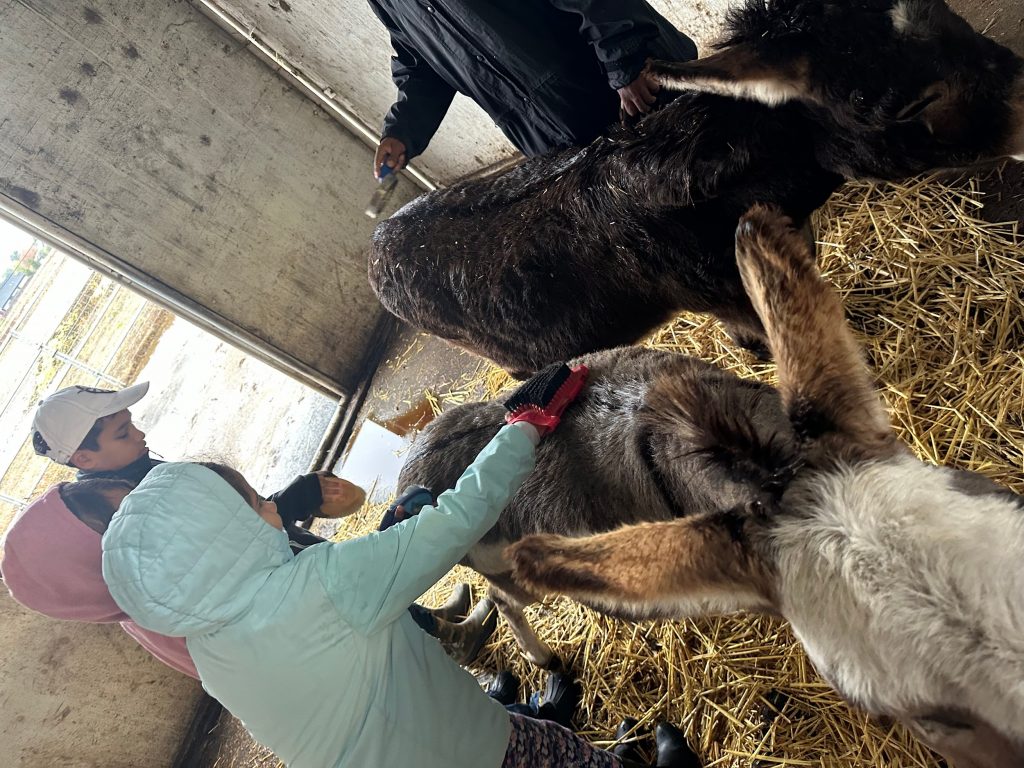
They got brushing, general love, and attention. After that, we visited some horses in their stalls and then did a chore to help support the barn maintenance. We swept the barn isle. It’s an easy chore, but the kids needed training to learn how to sweep effectively, then they got to it.
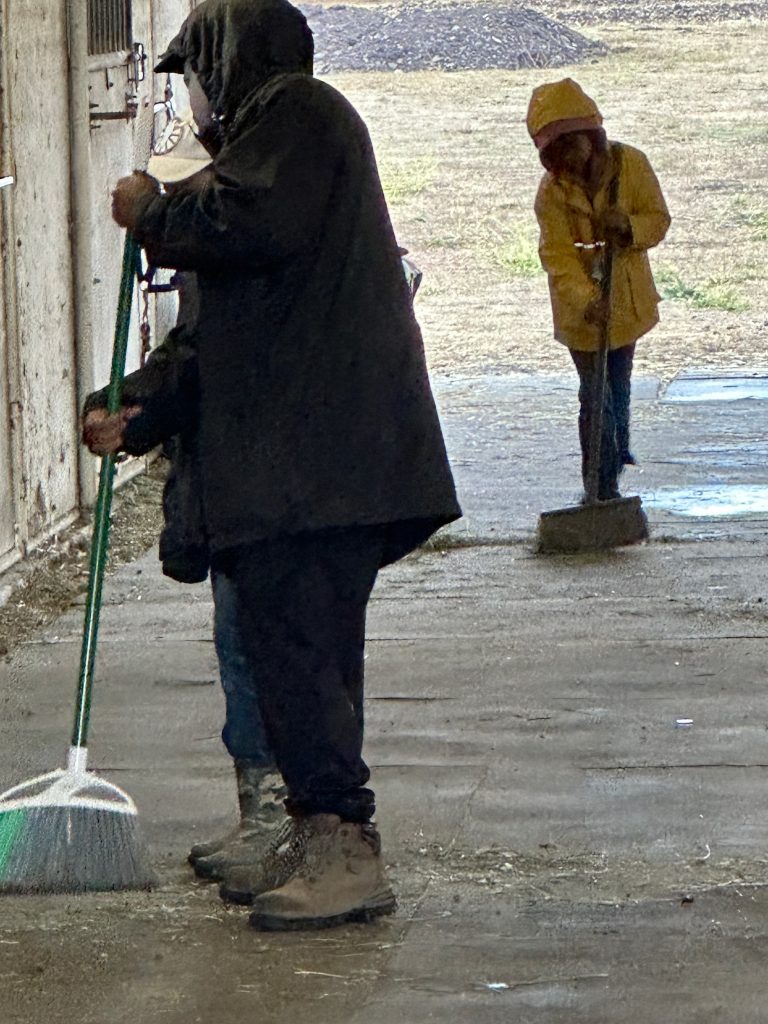
By that time the clouds had finished draining rain and we got the horses out for general grooming and preparation to ride.
We had three returning kids and one new boy who showed up after the rain stopped. The horses were a bit damp, and still happy to visit and hang out with us. Our new boy was older and told us some stories about the horses in his life at home. The returning students got right to it, even helping with the hoof cleaning - an advanced skill for grooming.
The sand arena had big puddles so we mostly rode on the driveway (trail ride).
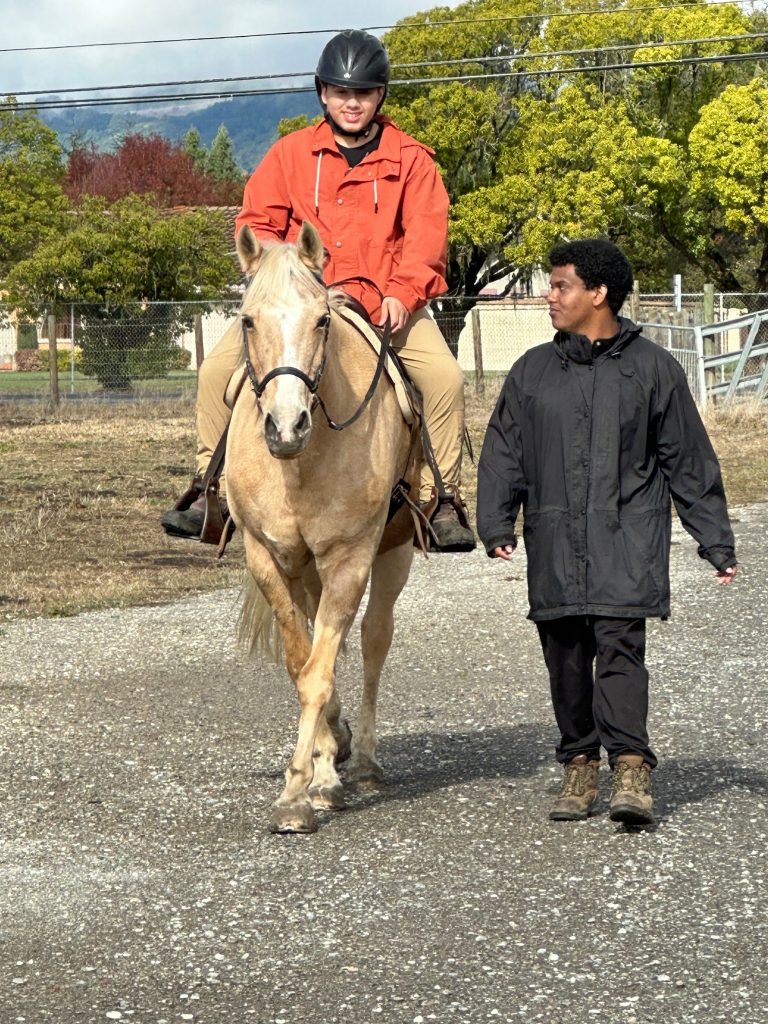
The horses were mellow today and the kids had fun guiding them around the farm.
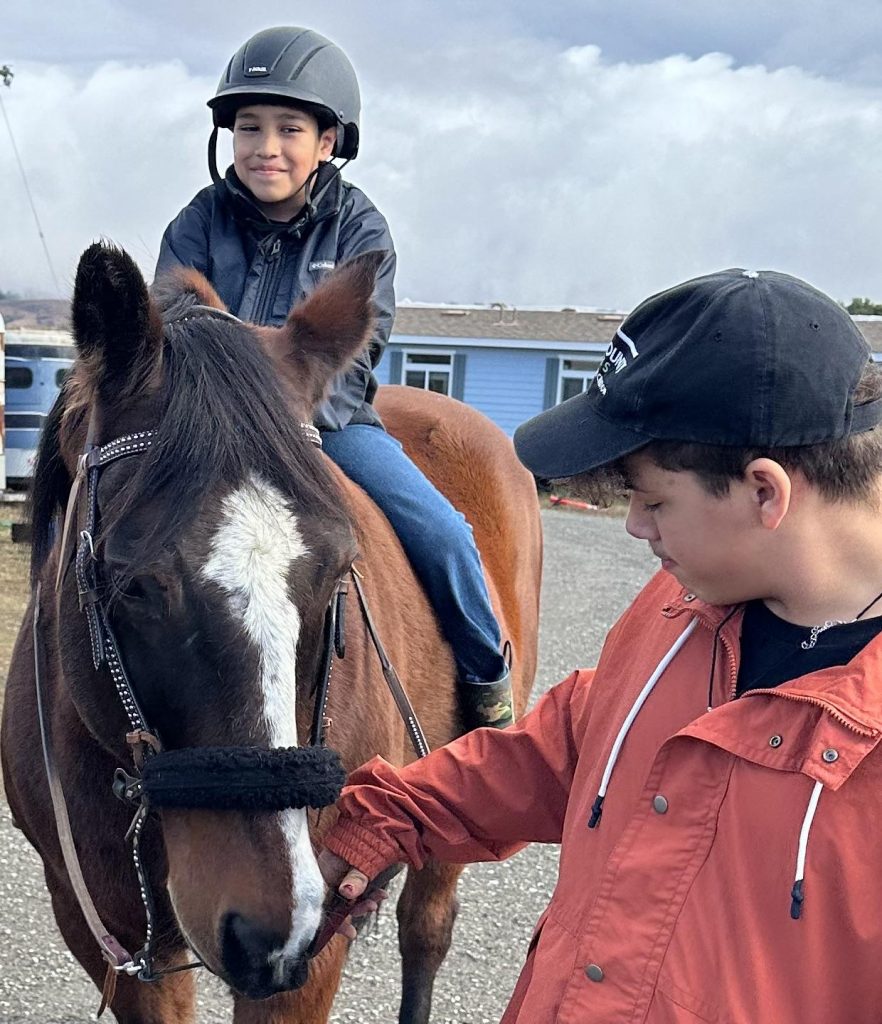
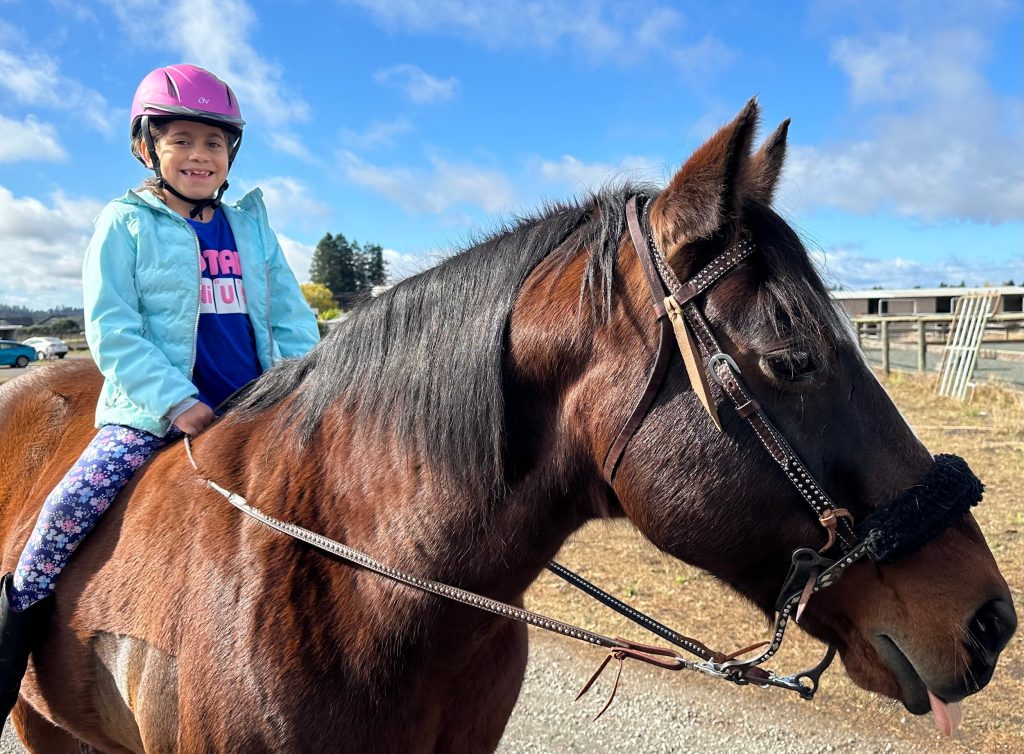
Due to Reilly healing from a minor issue, the kids rode him full bareback - no pad or anything. It’s an intimate way to ride and feels a little slippery but warm too.
We finished up playing fetch with Bubbles.
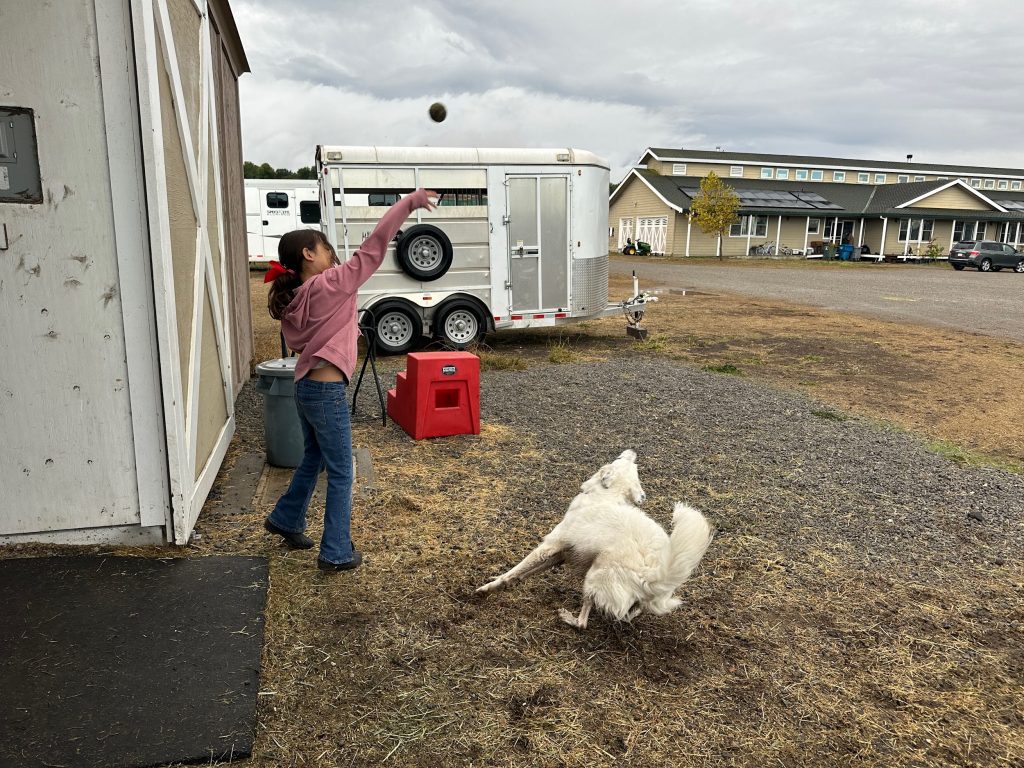
A good day even with some rain drops.
